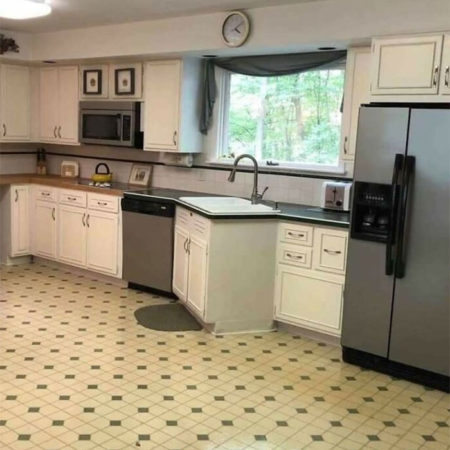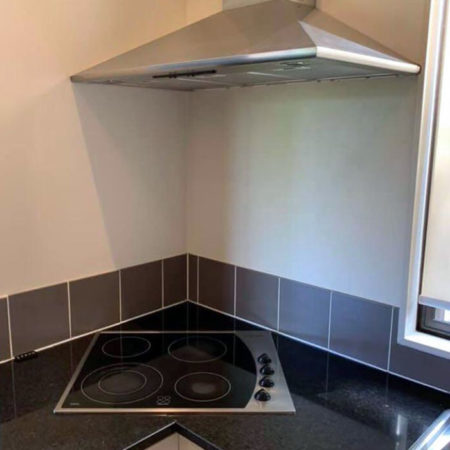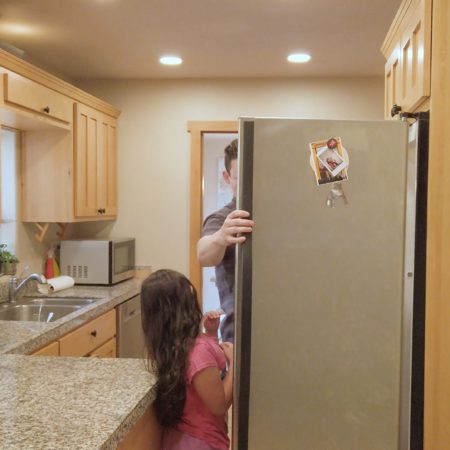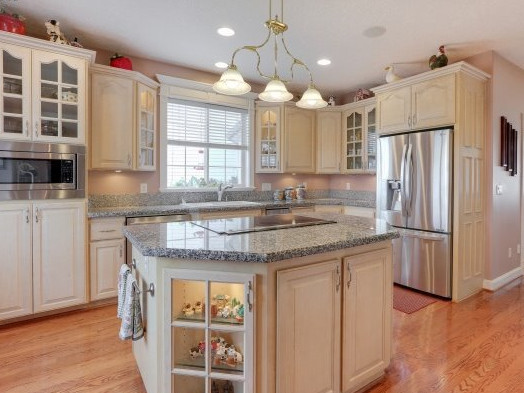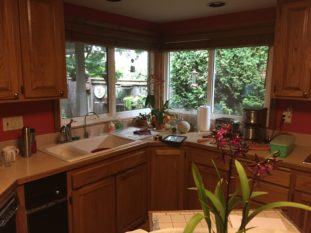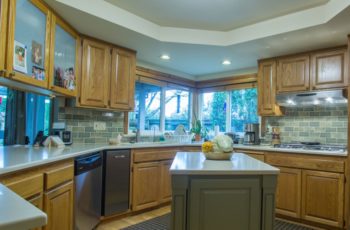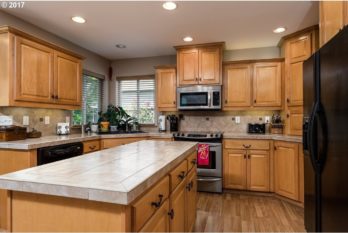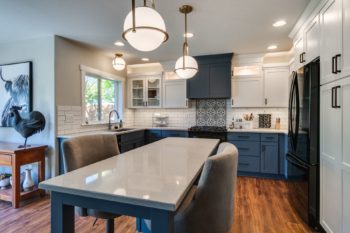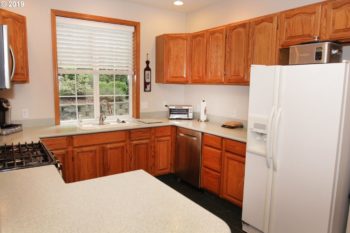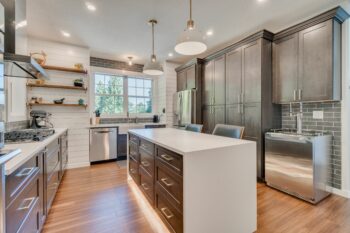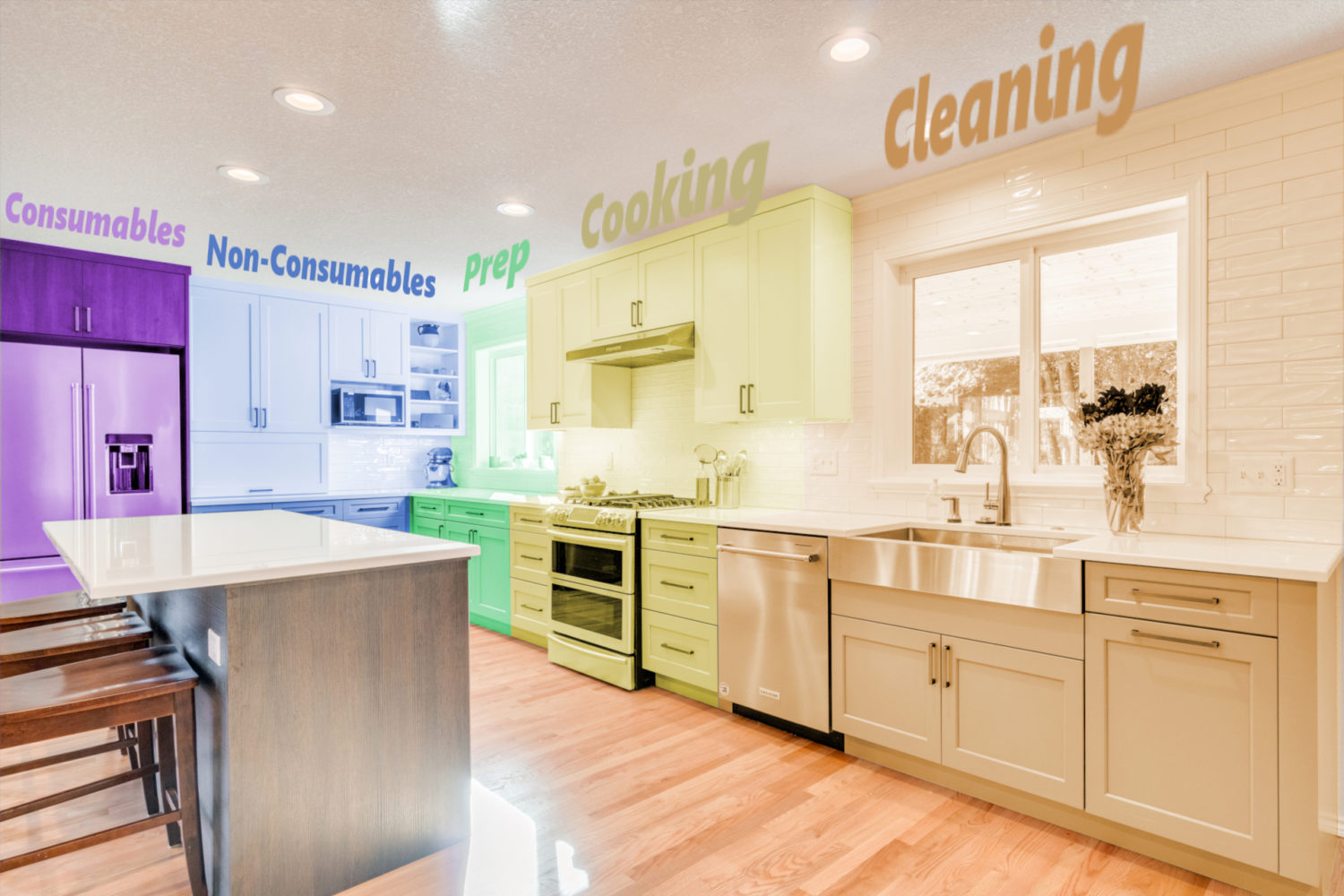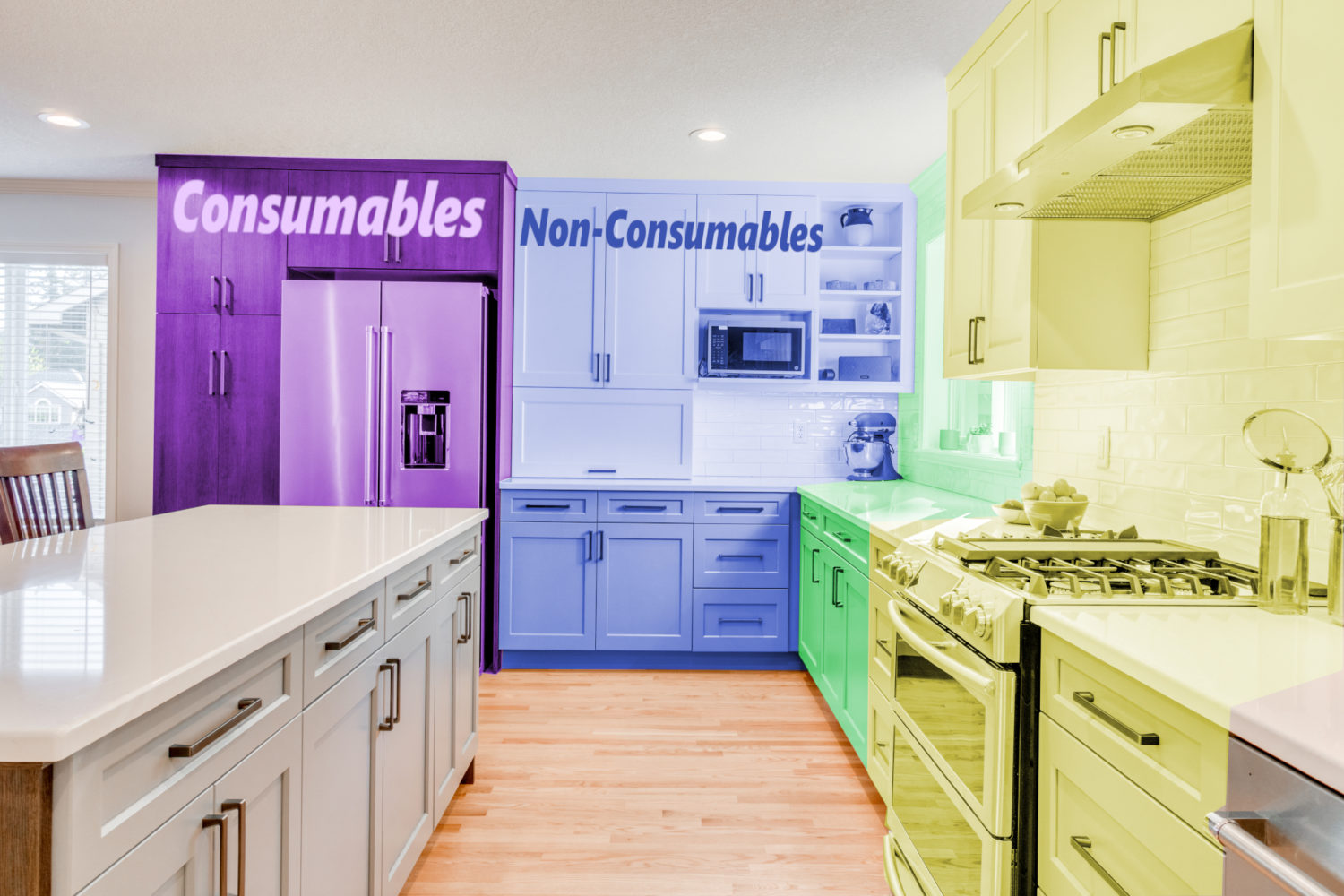As world-renowned kitchen designer Mick DeGuilio once said, “The kitchen is the heart of the home.” Even since the days that it was nothing more than a campfire in a cave, a kitchen has always been a place of gathering. As a result, the heart of your home should reflect the needs, lifestyle, and personality of you, the homeowner.
A kitchen remodel is arguably one of the most complicated types of home renovations. It’s also one of the most rewarding, both functionally and financially. Home and homeowner interact more in the kitchen than anywhere else. That’s why a kitchen designed specifically for you can have a tremendous impact on the quality of your life.
At Lamont Bros., we specialize in custom-designed home remodels. Every client we work with has different expectations of what a successful remodel means, and it’s our job to bring those expectations out into the design. We’ve worked with dozens of families across the Portland Metro Area to transform their kitchens. If you want to learn everything there is to know about kitchen remodeling, you’ve come to the right place.
On this page, you can become an expert on all things “kitchen remodel.” We’ll discuss everything you need to know, including costs, design, cabinetry, construction, and process. You can also access several other kitchen remodeling resources on our website through this page. By the time you’ve read all the information listed here, you should have a strong understanding of what you can expect from a kitchen remodel and how you can help make yours a success.
Why Remodel Your Kitchen?
There are several reasons why somebody might choose to remodel their kitchen. While the ultimate goal is to improve your home, different people have different definitions of “improvement.” Some are more concerned with form and functionality, while others care more about getting a good return on investment.
Improve design functionality
One of the top reasons for remodeling a kitchen is to improve how the space functions. This often comes as a result of several flaws in the original design which make the cooking process less efficient.
In a kitchen, every design element interacts with every other one. For example, the placement of appliances affects the storage needs of adjacent cabinetry. In turn, cabinet doors affect the walkways and traffic flow between different workspaces. Then, the traffic flow between workspaces influences where the appliances can go, and the cycle begins again.
For somebody without any experience in kitchen design, this can often feel like an endless game of whack-a-mole. You solve one issue just in time for another to pop up somewhere else. Many homeowners choose to work with a professional kitchen designer for this exact reason.
The benefits of working with an experienced designer are many. They should be able to help you to identify and solve design issues that negatively impact the way you interact with your kitchen. But beyond that, they can also incorporate design features that actively benefit your kitchen’s functionality.
It’s not just about eliminating the things that aren’t working. It’s also about identifying and implementing what will work well in place of those things.
Meet your personal needs
So, what design features should your kitchen have to fit your needs? The answer depends on several factors related to your lifestyle. A kitchen designed specifically for you should take into account what makes you different from other homeowners, and how those differences affect the way you use your kitchen.
Consider the needs of a kitchen used by a young couple with no children who frequently eat out. It will likely look much different than that of a large family who cooks and eats at home together every night. The young couple may need basic appliances, minimal countertop space, and limited cabinet storage for the occasions when they do cook. On the other hand, a large family would need more of everything. Larger prep space, more stove burners, and an extra-large refrigerator would all provide enormous benefits to the homeowner in this case.
Personalizing the design of a kitchen is another area where professional designers excel. When you work with a designer, you’re no longer responsible for finding design solutions that will benefit your lifestyle. Instead, you simply tell your designer about yourself - how you live, how you cook, what you want to be able to do in your kitchen, etc. - and they will recommend design elements that help achieve your goals.
If you love to bake, maybe you need a few more ovens than the standard kitchen. If you like to host guests, a workstation sink can make entertaining a breeze. Or maybe you care most about a consistent, uniform visual design. In that case, integrated, cabinet-faced appliances might be great for you.
The important part is that in the end, you get a kitchen that resembles a well-tailored suit — custom-fit specifically to you.
Increase home value
Remodeling your kitchen is a difficult decision to make. A lot of homeowners get hung up on the price. If you’re going to spend tens of thousands of dollars on a kitchen remodel, it had better pay off, right?
While a custom kitchen remodel certainly adds to the quality of your home life, it can also add value to your home. The key to a financially profitable remodel is patience. The simple truth is that a remodel is a long-term investment. If you plan to sell your home in the next couple of years, you might want to think twice about an expensive remodel. However, the longer you hold your home after remodeling, the more value it adds to your home.
Here’s how it works: A kitchen remodel can add anywhere from 50%-80% of its contract price back into the value of your home. So, if you sell your home immediately upon completing your remodel, you would only recoup 80% of the remodel cost at most. However, if you keep your house, its market value will continue to increase year by year. After 3-5 years at an average rate of growth, the remodel would make you money.
This is because of the principle of compounding interest. Consider a home worth 400,000. If you remodel the kitchen for $100,000, you immediately recoup 65%, or $65,000. If the house grows in value by 7% per year, after 10 years, it would have been worth $787,000 without a remodel, for a total cash gain of $387,000.
But, since you remodeled the kitchen, that extra $65,000 has also been compounding in value. Now, the home is worth $915,000, increasing in value by $515,000. Subtract the remodel cost, and you end up with a cash gain of $415,000. In 10 years, the kitchen remodel turns a profit of $28,000 more than not remodeling.
At Lamont Bros, we use a proprietary remodel investment calculator tool to estimate how long it takes for a remodel to become financially profitable. You can use this tool to compare side by side how much your home will be worth after a certain amount of time.
Portland Sample Home Graph: Value of a Remodel
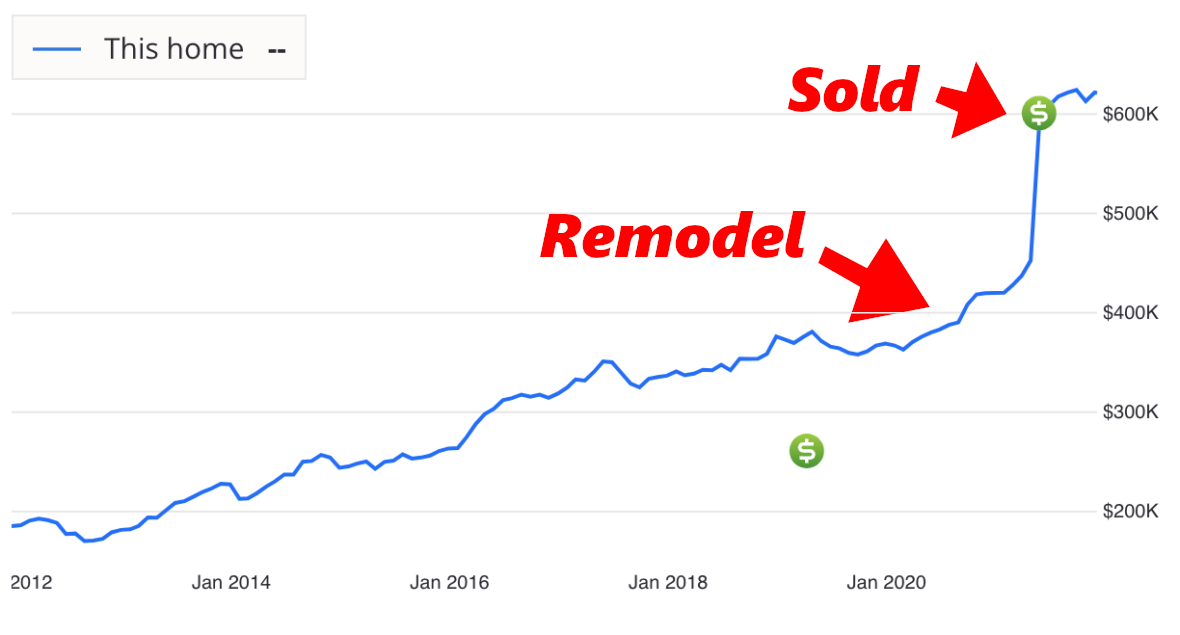
Update style & aesthetic
Sometimes, the way your kitchen looks can be a compelling enough reason for a remodel. Maybe it’s a little too 1990s. Or maybe it just doesn’t match your style, whatever that may be. In any case, it’s completely reasonable for you to want to like the way your kitchen looks. After all, it is your kitchen.
There’s no use beating around the bush - some kitchens are just ugly. It’s okay to admit it. We’ve remodeled a lot of kitchens built in the 80s, 90s, and early 2000s that were probably considered stylish in their day. Now a few decades down the road, styles have changed. That, coupled with the fact that most of these kitchens have seen better days, often warrants a remodel.
Sometimes, it’s not so much that the kitchen looks “bad” per se. Instead, the homeowner simply wants the kitchen’s aesthetic to fit their specific tastes better. For example, maybe your cabinets are stained oak and you prefer a solid white, or you don’t especially like the backsplash. Remodeling your kitchen is a great way to make its style match your own.
Current interior design trends tend to fall under transitional style, a combination of both traditional and contemporary influences. It’s a modern twist on a classic design. As a result, there’s a lot of flexibility when it comes to designing a kitchen that fits your taste while also remaining universally stylish. You can draw from a multitude of both classic and current inspirations.
Visual aesthetics is yet another element of kitchen remodeling that greatly benefits from a designer’s expertise. When working within the constraints of transitional style, there’s a lot of room for interpretation. Since transitional style combines the old and the new, the challenge is often doing so in a way that feel right. A skilled designer can help you sift through different design elements that speak to you, and then incorporate them into your kitchen remodel design. That way, you end up with a design that is cohesive, tasteful, and follows the principles of transitional style.
Types of Kitchen Remodels
Since there are so many different motivations to do a kitchen remodel in the first place, it makes sense that there isn’t a one-size-fits-all approach. Rather, most kitchen remodels fit into one of four categories, each of which accomplishes different goals.
Cosmetic Refresh
The least invasive and lowest cost option for a kitchen remodel is a cosmetic refresh. The primary focus of this type of remodel is to update the visual appearance of the kitchen. Some cosmetic updates can also improve the functionality of your kitchen, such as upgrading from laminate to quartz countertops, which are more durable and easier to clean.
The defining characteristic of a cosmetic refresh kitchen remodel is that it involves only finish material changes. In other words, the remodel is entirely surface-level. There are no major changes to the structure, utilities, or placement of appliances or cabinetry.
A few common features you might see in a cosmetic refresh include:
- Re-painted or re-stained cabinetry
- Updated countertops
- New flooring
- Backsplash
- Plumbing fixtures
- Cabinet handles
Pull-and-Replace
When your kitchen needs more than just a light touch-up but less than a full overhaul, a pull-and-replace kitchen remodel is the way to go. In a pull-and-replace, everything in the kitchen is removed and a new replacement is installed in its place.
As with a cosmetic refresh, there are no major structural or utility changes to the kitchen in a pull-and-replace remodel. However, unlike a cosmetic refresh, the entire previous kitchen gets removed in a pull-and-replace. From flooring to cabinets and kitchen faucets to refrigerators, you get an entirely new kitchen.
One of the main benefits of a pull-and-replace kitchen remodel is that it spares the homeowner the expensive process of moving plumbing or electrical hookups. As long as every new item goes back where its outdated counterpart was, there’s no need to extensively re-pipe or re-wire anything. With the cost of trades continuing to increase, this helps keep a kitchen remodel affordable.
In a pull-and-replace remodel, you can expect to see:
- New cabinetry & hardware
- Updated appliances & fixtures
- New flooring
- Updated backsplash
- Lighting fixtures
Full Custom
When a kitchen has serious design flaws or doesn’t meet the lifestyle needs of the homeowner, a full custom kitchen remodel is often the best solution. Full custom kitchens free you from having to work within the constraints of your old kitchen’s layout. Whether you need more cooking space or want to rearrange the floor plan, a custom kitchen remodel offers the most amount of design freedom.
A full custom remodel is often the best way to design a kitchen that serves your needs. The tradeoff is that the design is often limited by the homeowner’s budget. Moving appliances, cabinetry, plumbing, or electrical costs a lot of money because it requires specialized skills. If you want to remove a wall to expand your kitchen or create an open floor plan, that involves structural changes to your home, which costs even more.
As a general rule of thumb, the more you change the original design of your kitchen, the more your remodel will cost. A custom kitchen remodel may include:
- Full re-design of kitchen layout
- Major structural changes
- Custom cabinetry
- New appliances
- New flooring
- Updated backsplash
- New lighting fixtures
Kitchen Addition
Sometimes, the available space in your home doesn’t quite accommodate the size you want your kitchen to be. The solution to this problem is sometimes to add more space. Although it might technically fall under the “full-custom” definition, kitchen additions often deserve to be put in their own category.
In a kitchen addition, you’re not only re-designing your entire kitchen but also adding square footage to your home. It’s essentially like having two remodels happening in the same place at the same time. The process of incorporating an addition into a kitchen remodel’s design presents several challenges. Such a major change to the home’s structure requires extensive design work and permitting. This in turn requires more professional skills and more labor during construction.
Kitchen additions are a great option for families who love their current home but have outgrown it in some ways. When you need more space to cook for the whole family, but don’t want to cannibalize a living room to achieve that goal, it may be best to do a kitchen addition.
Keep in mind that a kitchen addition is more expensive than a typical kitchen remodel. However, also adds square footage to your home, which is a surefire way to increase its value.
Cost of a Kitchen Remodel
Determining the cost of a kitchen remodel is notoriously difficult because, as you know, “kitchen remodel” can mean several different things. At Lamont Bros., the average cost of a Portland kitchen remodel in 2021 was $96,580. However, this isn’t an especially helpful number because of the wide range of kitchen remodel costs. Yours could cost significantly less or more than the average.
The more helpful approach is to consider a price range for the different types of remodels:
Cosmetic refresh: $50,000 - $70,000
Pull-and-replace: $70,000 - $120,000
Full custom: $120,000 - $250,000+
Kitchen addition: $200,000+
When planning for a kitchen remodel, it’s important to carefully examine and manage your project budget. Below is a cost breakdown of what goes into a kitchen remodel, as well as a few factors that may raise or lower your total cost.
Budget breakdown
The total cost of a kitchen remodel pays for the entire process of designing and building your new kitchen. The breakdown below factors the cost of labor and materials into each category.
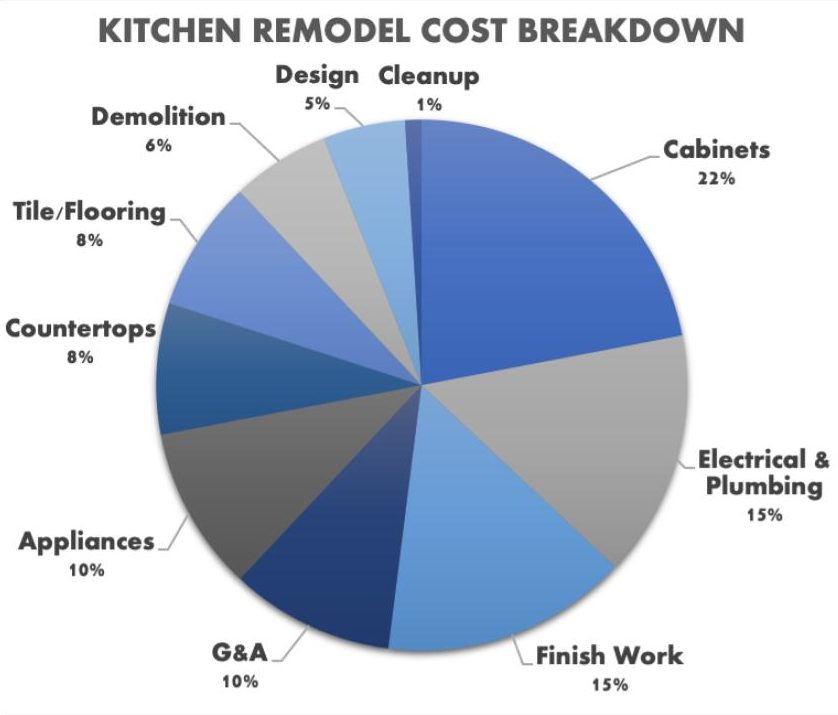
Cabinets - Since they take up the most space in a kitchen, it makes sense that cabinets take up the most space on the budget. They also require several hours of skilled labor to install.
Electrical & Plumbing - Changes to these systems in a remodel require the skills of specialized subcontractors. Skilled tradesmen charge by the hour, and they aren’t cheap.
Finish Work - The closer attention to detail a job requires, the more it takes. Finish work includes all of the fine carpentry required to bring your remodel to a white-glove, polished finish.
General & Administrative - Every company has a set amount of overhead expense. These costs ensure that the company can run smoothly and provide you with a high-quality remodel.
Appliances - Most kitchen remodels include a new refrigerator, oven, cooktop range, dishwasher, sink, garbage disposal, and microwave.
Countertops - The cost of a countertop depends largely on the material, size, and complexity of its dimensions. Granite or quartz costs more, while synthetic and laminate materials are less.
Tile/Flooring - The cost of flooring is usually a trade-off between skill and labor. Hardwood is a more expensive material but easy to install. Tile costs less but requires more skill and time to install.
Demolition - To remodel your kitchen, we have to demolish your old kitchen. A lot of time and planning goes into making sure this gets done safely and efficiently.
Design - A great remodel begins with a great design that meets your needs. It’s best to hire an experienced designer to bridge the gap between your dreams and your remodel plan.
Cleanup - After completing a remodel, an experienced remodeler will hire a professional cleaning team to deep clean the finished kitchen so you can start fresh.
What can reduce the cost of a kitchen remodel?
While your kitchen remodel is most likely to fall somewhere in the price range assigned to its specific type, there are steps you can take to keep your price closer to the low end of that range.
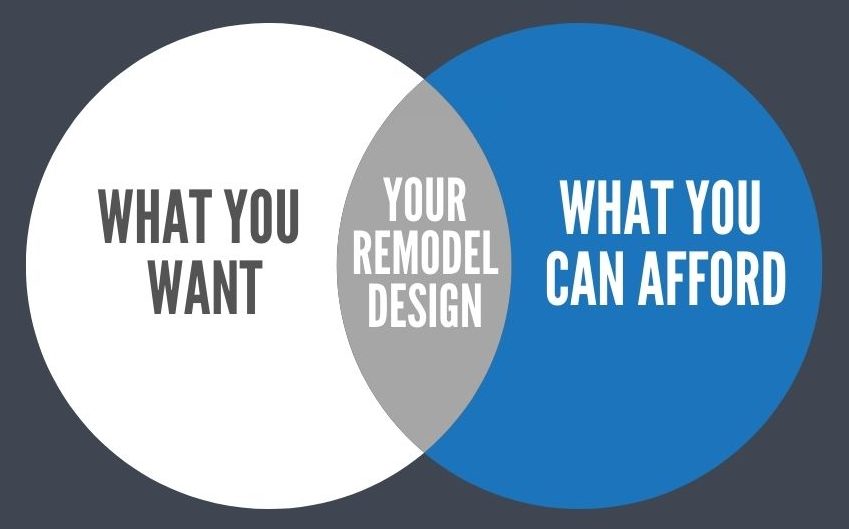
Only change what you need
During the design phase, there are three different tiers of changes you can make. The base, most important tier are considered “necessities.” These are the changes that you have to make for your kitchen to function as it should. The next tier up is your “wants,” the things that aren’t necessary but would greatly improve the use of your kitchen over time. The final tier is made up of “luxuries.” These are the features that cost a lot and add very little value to your kitchen.
When trying to keep your kitchen remodel costs low, it goes without saying that you should start with the necessities. Once they have been factored into the budget, then you can start to add the wants and the luxuries if you have money left over. The important thing is that you prioritize the changes that will have the most benefit to your lifestyle.
Choose entry-level cabinetry
Cabinetry takes up the most space in the kitchen and the budget. You’ll save yourself anywhere from 30%-60% on cabinets by going with “good” level instead of “better” or “best” (more on that later).
Recognize that, depending on what you need, entry-level cabinetry isn’t always an option. Sometimes, your kitchen requires more customizability than the limited selections available in this category. However, when possible, using cabinets at this level still provides a high-quality product at a lower cost. They simply lack certain customizability factors that higher-tier cabinets offer.
Work with a professional designer
One of the greatest benefits of working with a remodel designer is their ability to value engineer a remodel. As a trained professional who is familiar with the remodeling process, a skilled designer can help you make the most of your budget.
As the saying goes, “You don’t know what you don’t know.” When you work with a designer, you don’t have to be a remodeling expert. A designer uses their expertise to help you find practical, cost-effective solutions to the issues you want to solve. Through their training and experience, you can avoid costly mistakes that might hurt your bottom line.
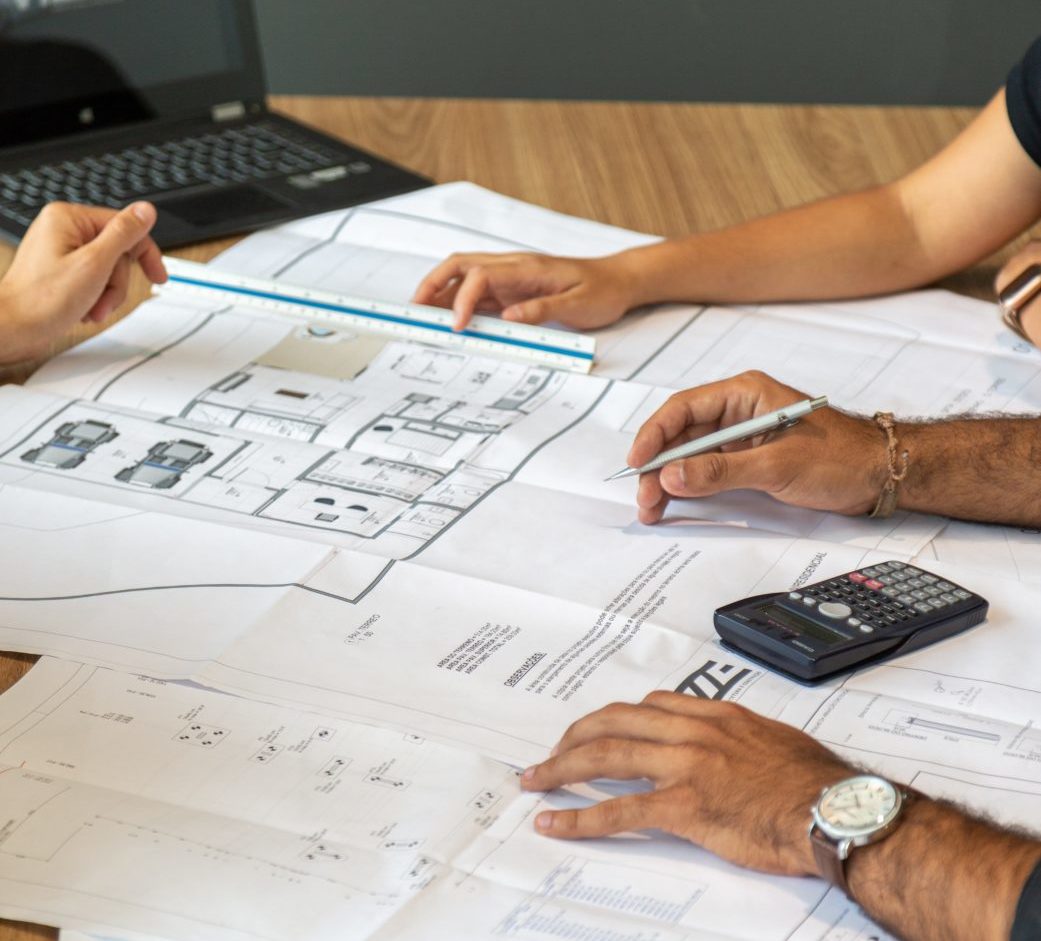
What can increase the cost of a kitchen remodel?
On the other hand, there are a few design decisions you should avoid if you’re trying to keep your costs low. The following features often add dramatically to the total remodel bill.
Moving appliances
When you change the arrangement of appliance locations in your kitchen, that doesn’t just mean moving the appliances. It also means you’ll have to route new plumbing and electrical hookups.
Most remodeling companies don’t employ the specialized tradesmen needed for these jobs. As a result, your builder will likely need to subcontract out any plumbing or electrical labor. Due to dwindling labor forces in both of these trades over the last few years, hourly rates have skyrocketed.
In addition to plumbing and electrical, there are also natural gas and HVAC systems to consider. Many ranges run on natural gas, and range hoods often need to be vented to the outside. It’s also possible that you’ll need to make other changes to these systems, too.
The more you move things around in your kitchen, the more it’s going to require skilled labor. The more skilled labor you use, the higher the cost of your kitchen remodel.
Structural changes
Another major cost factor for extensive kitchen remodels is structural changes. This may involve removing walls, adding or repositioning windows, or even adding floor space to the kitchen.
Any time you change, move, or demolish a wall, expect to pay a higher price. These types of changes often require extensive planning that involves structural engineers and building inspectors.
This may sound like a lot, but changes to the structure of your home can pose a serious safety risk if not done correctly. For example, if you remove a load-bearing wall without re-distributing the weight it holds, the worst-case scenario would be your house collapsing. That’s why it’s very important to go through all the necessary channels when dealing with structural changes.
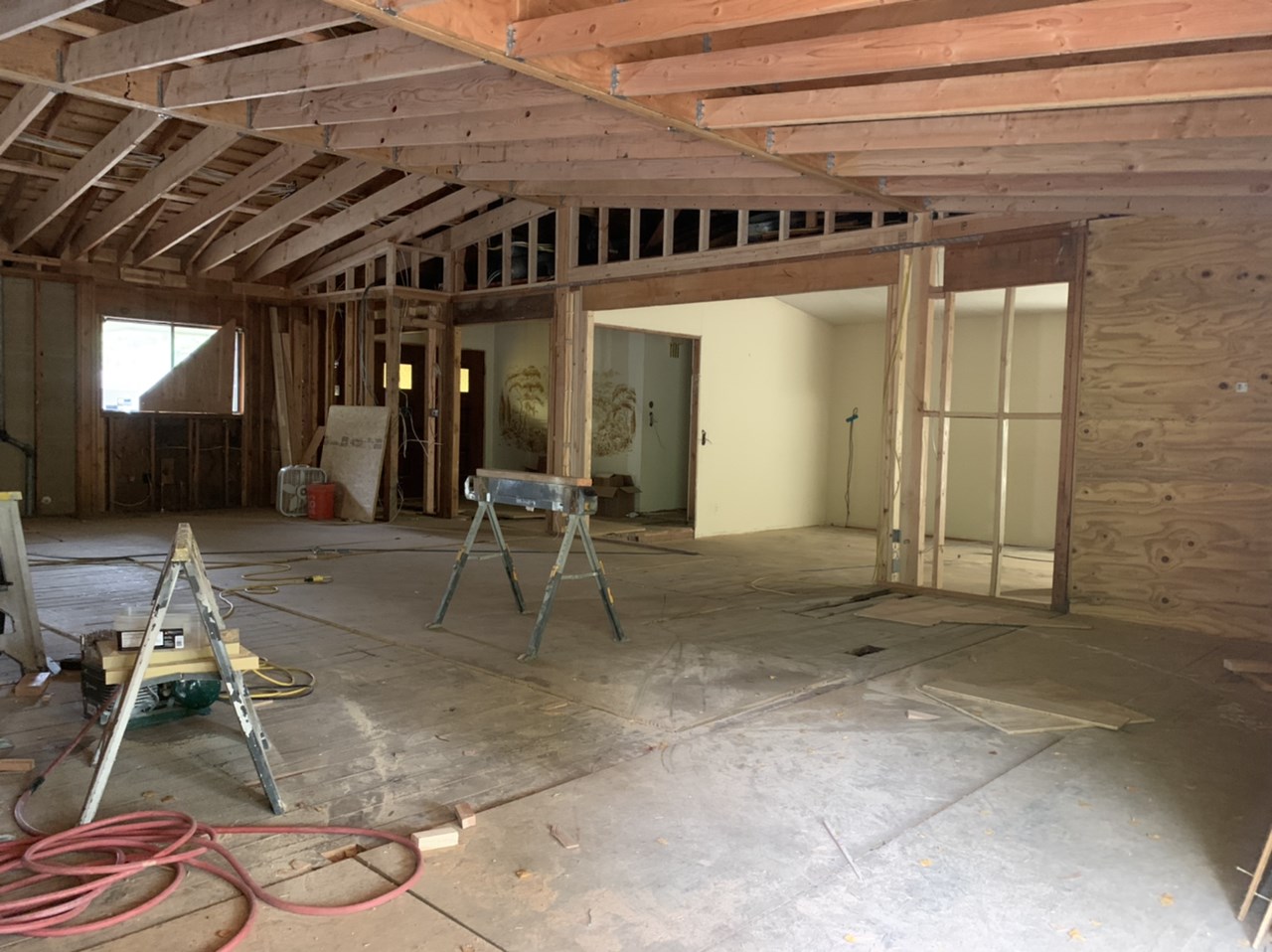
Kitchen Remodel Contractors
If you want your kitchen remodel done correctly, you have to hire the right professional to do it. The scope and complexity of the project have a direct impact on who is best suited for the job. Here are a few examples of common contractors for kitchen remodeling.
Owner/Operator
An owner/operator is a self-employed construction professional who both manages the business and performs a large portion of the work. In some cases, they may hire out some of the more specialized tasks to a subcontractor. Owner/operators tend to have a wide range of construction skills and are well-suited for small-scale projects.
If you hire an owner/operator, keep in mind that they typically won’t offer any design services, so you’ll be on your own for the design. You should also expect to not fully know how your remodel will look until it is complete. Since there is a flexible scope, this lends itself well to a design-as-you-go approach.
During construction, the owner/operator will be likely working on multiple jobs at the same time. There could be times when yours is just waiting for them, and since they are the only ones working, your project could take longer.
Sometimes an owner-operator is the best fit, especially if you are looking for an inexpensive option. They tend to have less overhead and they spend less time writing scopes of work, ordering materials, planning, and coordinating the project. As the homeowner, you will be expected to provide some of the materials yourself. If you prefer to be very involved in the project and do some of the management this approach could be a great fit for you.
Economy Kitchen Showroom
You’ve probably seen advertisements for kitchen remodel showroom that promises unbeatably low prices. It’s true that these showrooms do offer some great deals. Many homeowners also appreciate having the opportunity to see products in person before purchasing them.
Economy-level retailers are great if you’re looking for a fast, inexpensive way to refresh your kitchen. They focus primarily on low-cost cabinetry, countertops, and appliances. Most even offer some form of in-house installation services.
However, it’s worth noting that the material and installation tend to be of lower quality due to the fast pace and high volume of sales. Economy showroom remodelers also have very limited customization options and are primarily focused on providing low-cost products at the expense of quality.
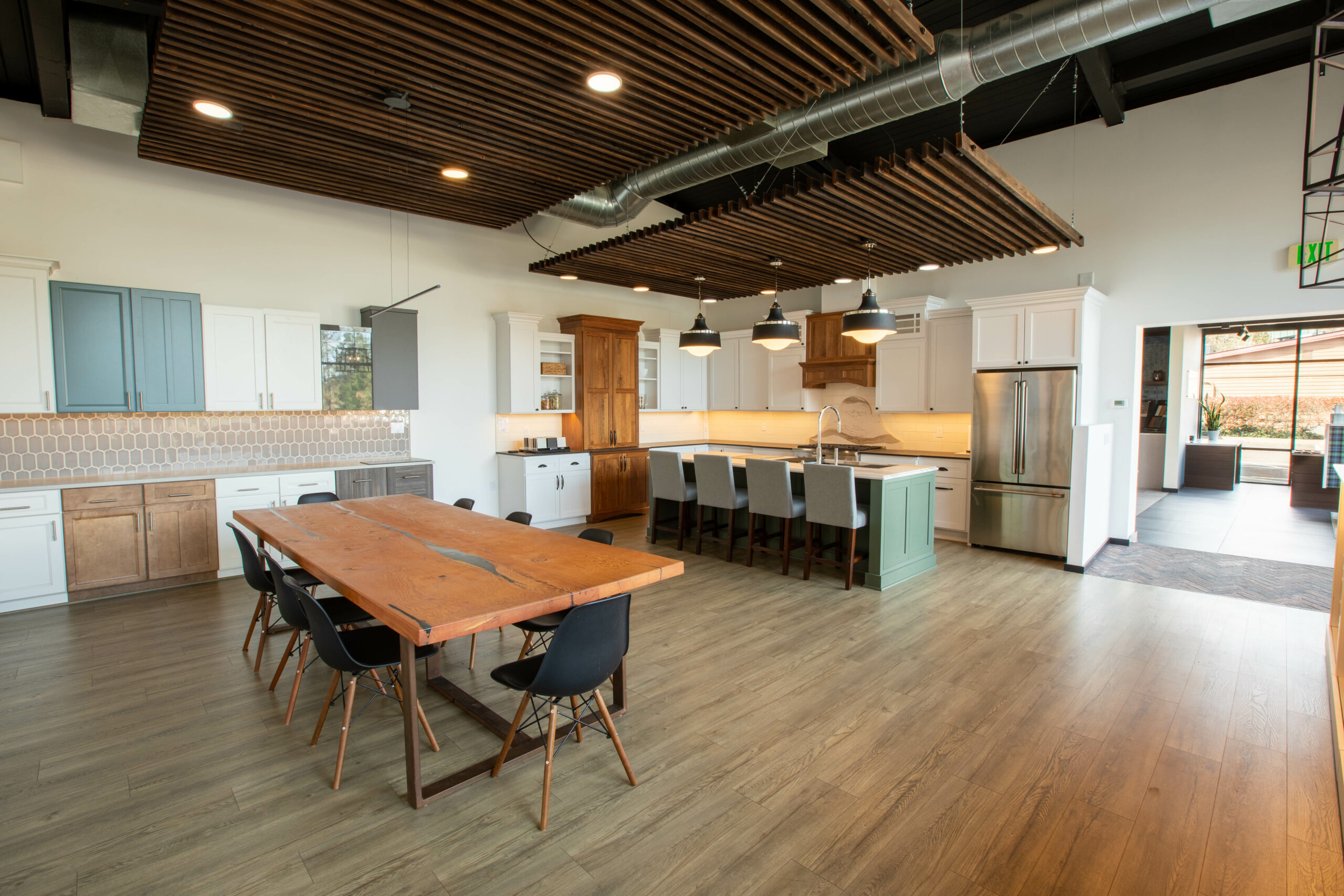
Big Box Stores
For homeowners who want to try remodeling their kitchen themselves, one popular option is to use the local Home Depot or Lowe’s. This option typically involves a lot of back-and-forth trips between the home and the store, and a lot of trial and error. If you’d rather just do the shopping and leave the work to someone else, most big-name building supply stores offer installation services through partnerships with local contractors.
Depending on the scope and complexity of your planned kitchen remodel, going this route may or may not be a good idea. If you’re just updating a few things, such as paint, flooring, or surface finishes, you can find all of those things at the store and probably install them correctly. However, an extensive, complicated kitchen remodel involves way more than just buying the right items. In this case, hiring a professional might be a better option. The challenge when working with store-provided contractors is that the homeowner often has to play the middleman between the two.
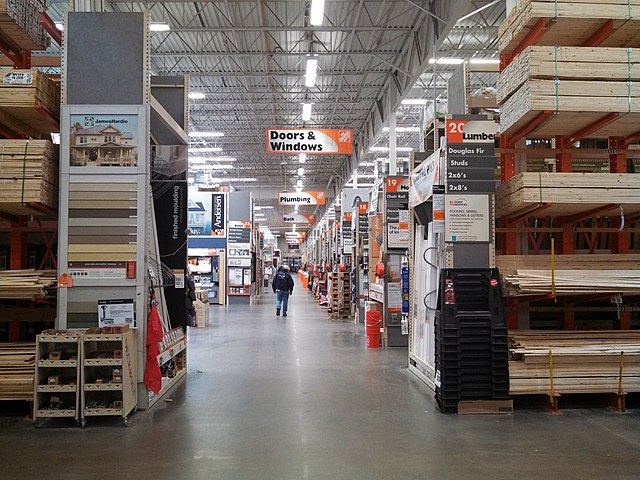
While using your local big box store to remodel might make sense, it’s important to identify whether you have the time and energy to devote to a project like this. Even if you're not doing the work yourself, you'll still have to coordinate between the store and the contractors. It’s also worth noting that the quality of products and installation falls somewhere between economy showrooms and established remodeling contractors. Beyond that, you’ll also find yourself limited in terms of design options, as there are very few customization options available when working through a big box store.
Established Remodeling Contractor
Capable of overseeing small and large-scale projects, a general contractor tends to be a more popular option for kitchen remodeling. Unlike an owner/operator, an established general contractor typically has a handful of employees. They may also hire outside subcontractors to do more specialized work.
The benefit of a working general contractor is that they can use their network of connections to find qualified subcontractors to work on your kitchen remodel. It saves you the trouble of having to find them yourself.
However, general contractors are still not designers. So if you hire one to do your kitchen remodel, you’ll also need to hire a separate designer to create plans for the project. This is where things get complicated. Having your design and construction teams separate means you'll have to bridge the gap between the two.

When a homeowner works with a separate designer and general contractor, it becomes the homeowner’s responsibility to coordinate between the two and make sure the design aligns with the construction budget.
Design-Build Firm
When you work with a design-build firm, your designer and construction crew are all part of the same team working toward the same goal: your remodel’s completion. As a result, design-build firms excel in remodel projects that involve coordination between the design and construction teams.
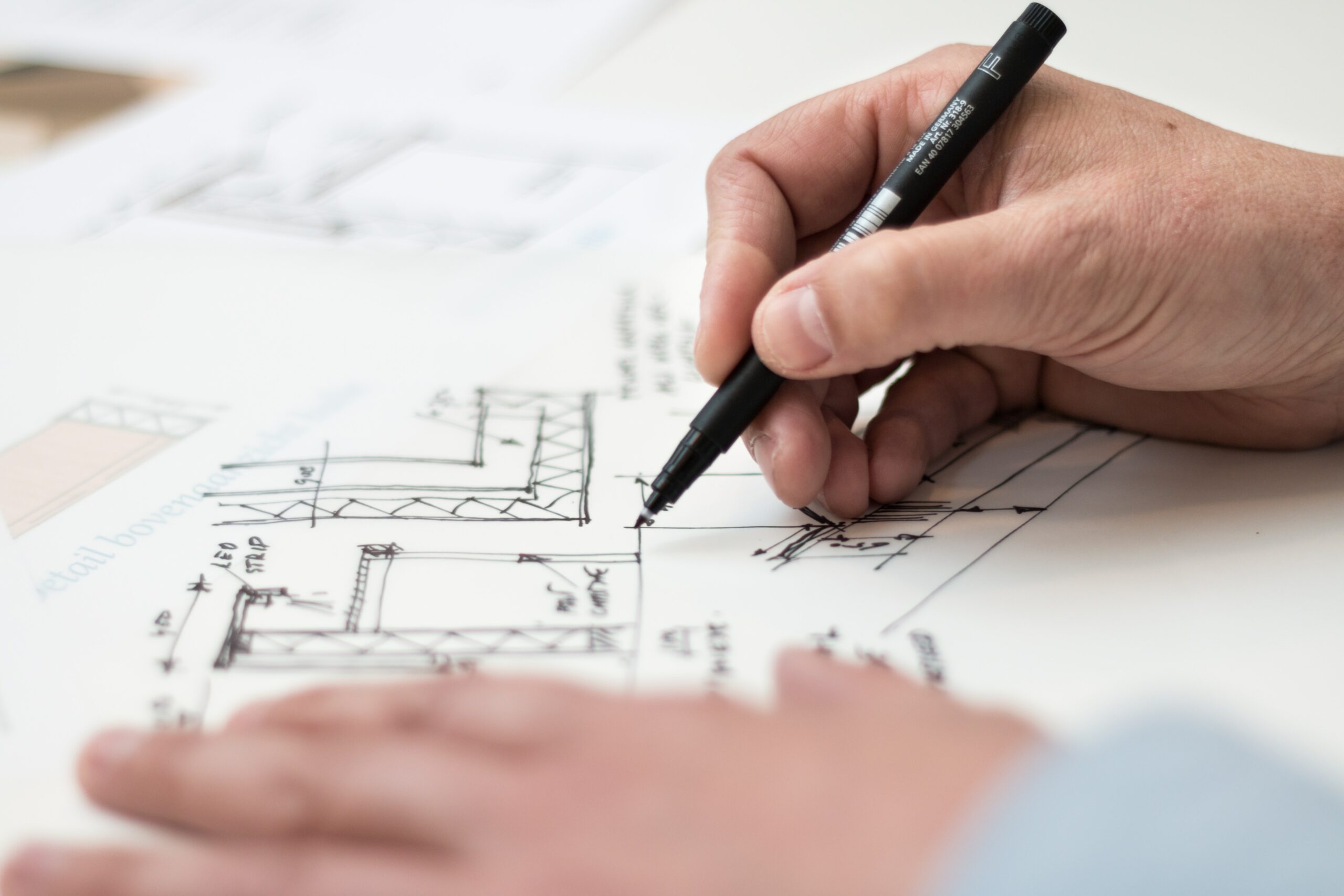
Even in cases like cosmetic refresh remodels where design work isn’t necessary, it’s still beneficial to have designs that function as a single source of truth for the project. Working with a design-build firm, you’ll get to see the designs beforehand, allowing you to fine-tune any details before moving to construction.
A design-build firm is also the best option to keep you in charge of the cost of your remodel. Because most design-build firms use fixed-price contracts, you’ll know exactly how much your remodel will cost before construction begins.
Ultimately, with a design-build firm you have one entity who you entrust with your design experience, your budget and the final remodel. Using this model, you can focus on offering input to enhance your remodel's design rather than be the middleman between all involved parties.
Ultra High-End Contractors
Sometimes, homeowners want their kitchen remodeled by the best of the best — the top tier of remodeling contractors available. These designers, architects, and craftsmen offer the greatest quality, boldest designs, and highest prices in the business.
Most of the homeowners that use these services have their own household staff to manage many aspects of the project. The clients only involve themselves where they consider it essential.
While most of these designers and artisans live in tier-one cities, there are some projects like this that get completed in the Portland Metro area. Typically in these projects, time and money are not major considerations.

How to Evaluate Your Contractor Options
The best way to find a good contractor is to contact several different remodelers in your area and narrow down the options until you find one that aligns best with your vision and values. As you consider potential contractors for your kitchen remodel, it’s important to know which questions to ask in order to select the best fit. Here are a few things to look for in a contractor:
1. The contractor understands your goals and can help you accomplish them
YES!
The contractor understands the challenges you are experiencing in your kitchen and how to solve them. You trust their personnel to work in your home.
MAYBE
The contractor seems to mostly understand the issues in your kitchen and has a pretty good idea of how to solve them.
NO
You don’t believe the contractor understands your needs. You do not trust the contractor or feel safe having them in your home.
2. The contractor is a good fit for your project
YES!
The contractor has extensive experience on projects similar to your kitchen remodel. They have some highly rated reviews reputable websites such as Houzz.com and Google.
MAYBE
The contractor has some experience remodeling kitchens and their previous projects are somewhat similar to the kitchen you envision. They have some highly rated reviews on reputable websites such as Houzz.com and Google.
NO
The contractor has no experience doing the type of kitchen remodel you are planning. They have few or no highly rated reviews on reputable websites such as Houzz.com and Google.
3. You are on board and excited about the contractor’s process
YES!
The contractor’s process makes sense to you. You feel like you are in control of the project and can make decisions for your home. You are excited to work with the contractor.
MAYBE
The process mostly makes sense, and you’re willing to work with it. You feel somewhat limited by the process, but still able to make the decisions that matter.
NO
You fundamentally disagree with the contractor’s approach and don’t like their process. You fear that the contractor will take control of your project and leave you out of decisions.
4. The contractor is a strong balance between quality, process, and cost.
YES!
The contractor’s past work showcases excellent quality. Their process is designed for a great client experience. You trust that your money will be well spent remodeling your kitchen with them.
MAYBE
n terms of quality, process, and cost, the contractor is stronger in one of the three, but still does the other two relatively well. You are still confident that the remodel project will be somewhat balanced.
NO
The contractor is clearly prioritizing either quality, process, or cost at the expense of the other two. You are concerned that the remodel's value will be too heavily focused on one specific strength.
Signs your Contractor is or isn't a Good Fit
Here are a few indicators that a contractor may or may not be a good fit. Watch for these things when considering your contractor options:
Green Flags:
- Fixed-price contracts — The total cost of the project is stated up front.
- Licensed, bonded & insured — The contractor can legally perform the work.
- Positive online reviews — The most useful contractor reviews are found on Houzz and Google.
- Takes ownership of failures — The contractor responds respectfully to any negative reviews.
- Client Testimonials — Real people sharing real experiences matters.
- Longer than minimum warranty — Shows the contractor will stand behind their work.
Red Flags:
- Cost-plus contracts — Can end up costing much more than originally expected.
- Unlicensed contractors — may not have the skills or certifications to do the job.
- Murky CCB certification — Missing or multiple CCB numbers indicate dishonesty.
- Extremely low bids — Estimates that seem “too good to be true,” usually are.
- Too eager to do the work — Good people are often busy and don’t need your project to survive.
Financing A Kitchen Remodel
Due to their complexity and scale, kitchen remodels can become very costly very quickly. Ranging in cost from 50,000 on the low end to over $300,000 on the high, remodeling your kitchen is a sizable investment. Fortunately, you don’t have to pay the full amount upfront if you can’t or don’t want to. There are several financing options available for remodel construction. You can read about the most common types below.

Home equity loan or line of credit
The difference between what your home is worth and what you owe on it is called equity. If you own a house worth $800,000 and currently owe $500,000, then your equity is $300,000. You can use a majority of that $300,000 as leverage to secure financing for a kitchen remodel.
In a home equity loan, you cash out a lump sum and pay a monthly mortgage fee on the amount. It essentially functions as a second home mortgage. Most equity loans have a repayment period with a fixed interest rate that lasts between 5 and 30 years. Because interest rates are low for home equity loans, they often make a lot of sense for renovation projects.
A slightly different approach is a home equity line of credit. Instead of a lump sum, the line of credit offers a more flexible approach to spending. In this case, you only take out what you need. A home equity line of credit functions much like a credit card. You first go through a “draw period” in which you use your line of credit to pay for what you need. During this time, which typically lasts about 10 years, you make small payments on the interest of the loan. After the draw period, you enter the “repayment period.” During this time, you may no longer spend money on the credit line and instead must begin making larger payments until it is paid off.
Cash-out refinance
A cash-out refinance is similar to a home equity loan, except that you don’t make two separate mortgage payments. If you have equity built up in your home, you can opt to refinance your current mortgage for a cash payout of up to 90% of your home’s value. With this type of refinancing, you only make one mortgage payment. Using the above example, if your home is worth $800,000 and you owe $500,000, you could do a cash-out refinance for a total mortgage amount of up to $720,000.
Home renovation loan
Loans designed specifically for home renovation and construction are incredibly versatile. They can also be a bit confusing, and their terms follow strict guidelines.
Federally backed Fannie Mae Homestyle Renovation Loans offer up to 80% of a home’s post-remodel value. For homeowners who qualify for their credit requirements, a Fannie Mae loan provides funding for construction projects but comes with several strings attached. The program requires homeowners to work with a contractor to draft design plans and submit them to the lender. The lender must then approve the plans for funding to go through. Once the project is underway, the lender may then send out inspectors during the build to ensure the plans are followed. The program also requires a final approval inspection once the build is done.
For homeowners who plan to purchase and renovate an entire home, a 203(k) Renovation Loan is another option. This type of loan rolls a mortgage and a renovation loan into one, and they’re backed by the FHA. This way, you make a single monthly mortgage payment and have funding to both purchase and renovate the home. These loans require that the homeowner hire a consultant for any major home renovations. 203(k) consultants are usually contractors or architects who oversee the renovations through completion. 203(k) loans don’t always work well for everybody. The requirements come with enough strings attached that it often turns out to be more work than it is worth.
The final type of home renovation loan is a Private Bank Loan. At Lamont Bros., we’ve found great success with clients who work through Umpqua Bank. These private loans are not federally backed like the previous two. However, private banks have fewer regulations and requirements for the renovation process. You’ll still have to submit plans for approval to the lender, but a local bank is likely to approve the loan and send inspectors to the site more quickly. A private bank loan can fund the renovation of a primary residence, seasonal or vacation home, and even accessory dwelling units.
Kitchen Design Layouts
The process of designing a kitchen begins with the layout. You’ll want to consider how different arrangements will affect the flow and efficiency of work in the kitchen. Although there is no set formula, there are a few effective approaches that you might want to consider as a baseline for your kitchen.
Work triangle
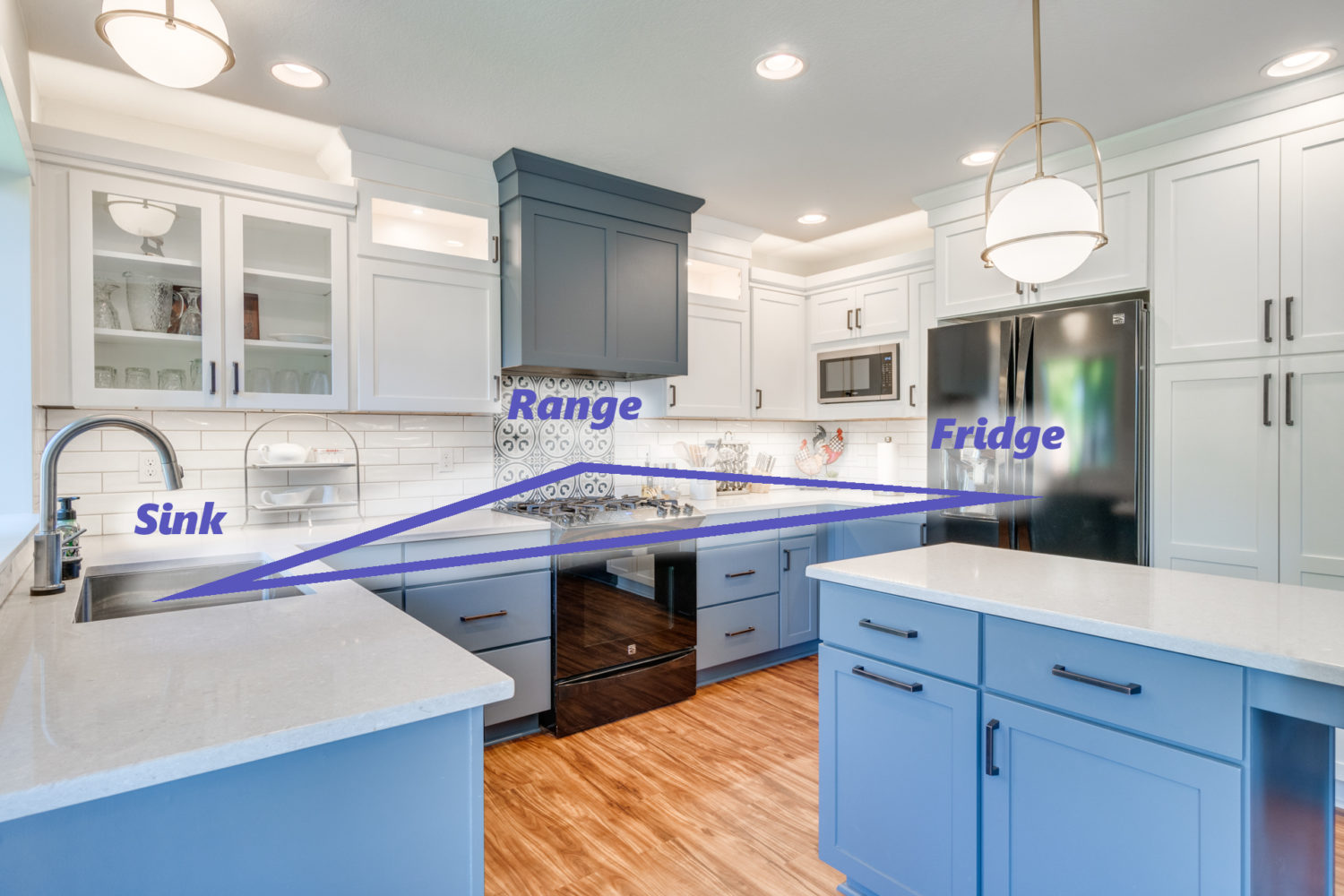
One of the most prolific kitchen design philosophies of the modern kitchen, the work triangle has influenced the construction of kitchens all over the world. This method stipulates that the sink, cooktop range, and refrigerator – the three most important components of a kitchen – should be arranged as three points of a triangle. This triangle should provide ease of motion from one point to the next and the paths between each one should be clear of obstruction.
Today, the validity of the work triangle is a hotly debated topic among interior designers. While some find it to be a useful tool, others believe that it is too simple of a principle to effectively serve the diverse needs of different homeowners.
Kitchen Zones
A contending approach to kitchen layouts is the kitchen zones method. Under this philosophy, a kitchen is arranged into five distinct zones. Each zone represents a different step in the process of preparing a meal.
1. Consumables
This zone represents any area where you might store food. The pantry and refrigerator go here.
2. Non-consumables
Another storage zone, this is where you store plates and utensils for serving and eating food.
3. Preparation
In this zone, you’ll do any non-cooking food preparation, including cutting and mixing. Countertop space is important in this area, as well as storage for any prep-related kitchenware, but a workstation sink could go here as well.
4. Cooking
This zone is reserved for cooking with heat. Your stovetop and oven, as well as any cooking utensils, dishes, pots, and pans should go here.
5. Cleaning
The sink typically goes in this zone, as well as the dishwasher and drying rack. Since you’ll likely need to wash both food and dishes, it’s best to place this zone near the non-consumables and the preparation zone.
In each project the zones might be broken up a little differently than outlined above. If you have a large kitchen and do a lot of baking, you might have a specific baking area. This area might feature some prep, consumables, and ovens. Another area might focus on stovetop cooking and prep.
Focal Point
While a functional layout is certainly important, some designers use a focal point design approach, which incorporates visual aesthetics into the layout.
The focal point approach to kitchen design involves building the kitchen to center on the most important area. The goal is to attract the viewers' attention to the focal point right off the bat. For different kitchens, this focal point may be different from others. Many kitchens center on the cooktop and range, with a feature wall behind it to add visual flair. Other kitchens may focus on the sink, in which case a window above the sink helps to draw the eyes.
In any case, the focal point approach uses design features to intentionally direct your attention to a specific area. The functional elements of the kitchen are usually also designed around this point, as well.
Selecting the Right Cabinets
A well-designed cabinet system is arguably the most important part of a good kitchen remodel. Cabinets make up the visual bulk of your kitchen, and you’re going to use them a lot. So, it’s important that you get your cabinetry design right. While most people have a good idea of what they want their cabinets to look like, there are a few things you should know before settling on a given cabinet line.
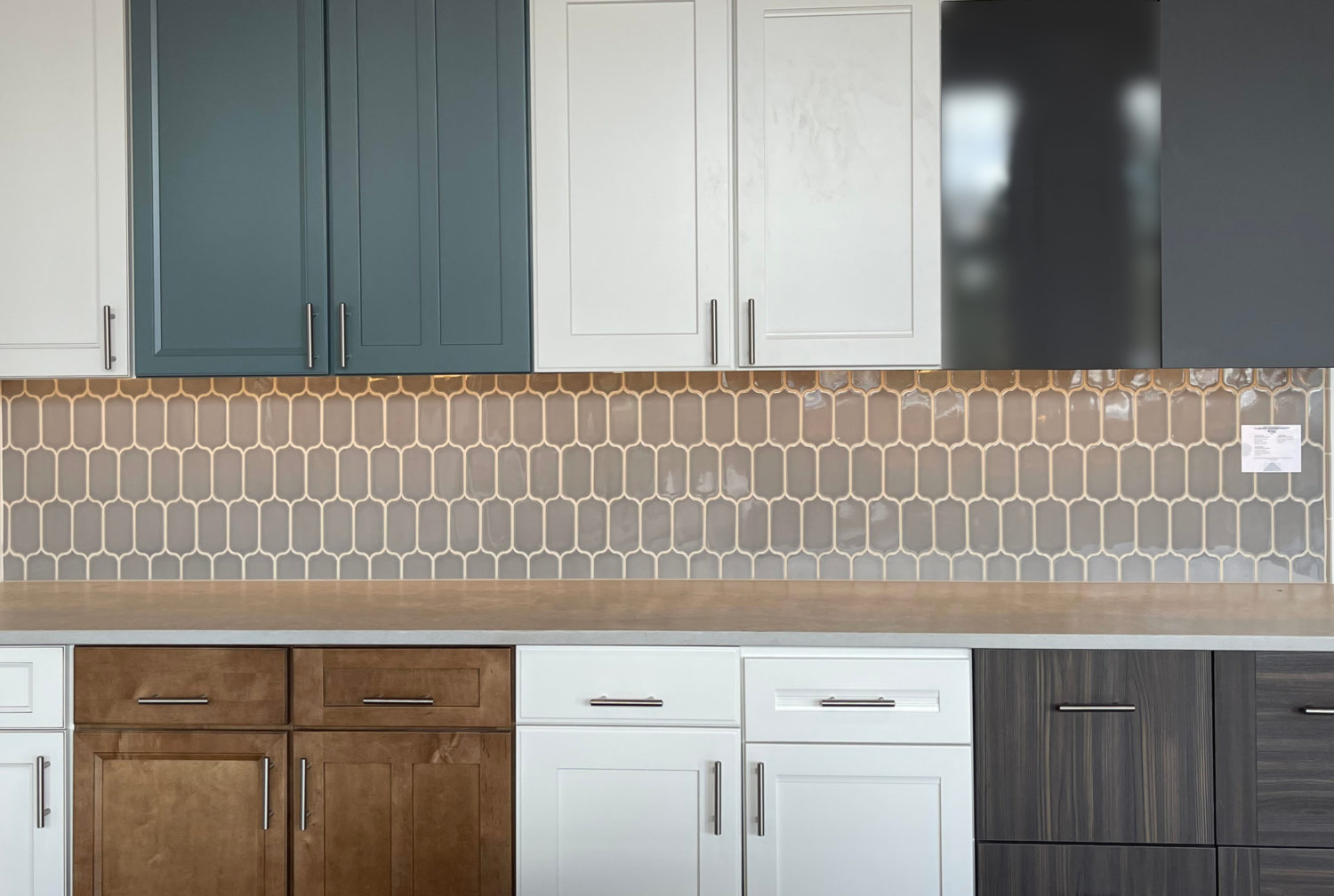
Good, Better, Best Classification
To help our clients understand the different quality tiers of cabinets and the available features each one offers, we present the different cabinet options to our clients in terms of “good,” “better,” and “best” cabinetry. This is a great way to begin planning for how your cabinets might affect your overall budget, depending on which line you go with.
Good
Many people hear “good, better, best” and automatically think that “good” must mean the lowest quality. This simply isn’t the case - even cabinets we classify in the good category are still very well constructed, durable cabinets. The main difference between the different tiers isn’t so much in quality as it is in customizability. Here are a few things you should know about good-level cabinets:
Least expensive: A good-level cabinet system for the average small kitchen costs anywhere from $15,000 - $20,000.
Limited size options: In this category, cabinet sizes are sometimes customizable by depth. You’ll have to choose from standard-sized cabinets by width and height. So, if your kitchen requires some custom-built cabinets, you may need to step it up to the “better” tier.
Less attention to “fit and finish”: While the overall quality of construction is excellent in good-level cabinets, they may have some minor variations in finish quality. Face frame joints may show hairline cracks where the seams meet, there might be some slight paint imperfections or a door might be slightly bowed.
Fewer styles and finishes: Most good-level cabinets offer varying door styles and finish colors, but the selections are few. Usually, there are 5-7 door styles, the most common of which are shaker and colonial. There are also about 12 finish options including paints and stains.
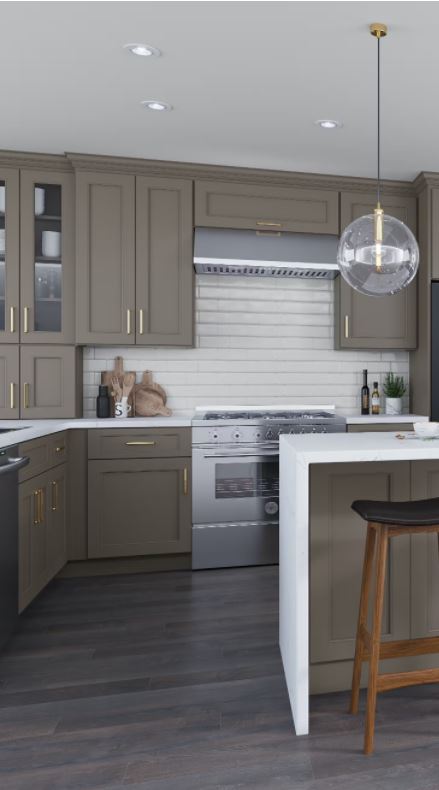
Better
When you choose to go with “better” cabinetry, you end up with a stronger balance between cost and customization. You’ll end up paying 20-30% more than the good level, but you’ll also have the opportunity to make your cabinets more your own. A few important qualities of better-level cabinetry include:

Mid-range cost: Though more expensive than good-level, better cabinetry is still more affordable than the best tier. At $20,000 - $30,000 for a full kitchen cabinet system, you’ll want to make sure it fits in your budget.
More size options: With better cabinets, you can also alter the width and the depth. This makes the better-level an ideal option for kitchens that simply need custom-sized cabinets due to their dimensions.
Custom insert options: You’ll also have access to more customization inside your cabinets with better-level options. There are utensil organizing trays, pull-out shelves, and specialized storage options to choose from.
Better fit and finish detail: For all intents and purposes, better-level cabinets should be free of any noticeable flaws. They still won’t be perfect, but manufacturers do pay more attention when it comes to these more expensive cabinet lines. The boxes should be essentially square and the face frames should have no surface flaws.
Wider range of styles and finishes: Better-level cabinets feature up to 30 door styles and over 100 different paint and stain options.
Best
If you’re after top-tier kitchen cabinetry, the “best” category is where you’ll find it. With unparalleled customizability and near-perfect factory finish, these are for people who want a kitchen designed just for them. Once you get into this category, there isn’t much of an upper limit on what your cabinets could cost. Here’s what you need to know about best-level cabinets:
Highest price range: Most cabinets in this category cost between $35,000 and $50,000. That’s 2-3 times the cost of the “good” level. We’ve even seen homeowners spend upwards of $60,000 on cabinets alone.
Total size customizability: One of the greatest advantages of best-level cabinets is that the cabinet maker will make the boxes to any dimension you request. You can ask for any height, width, or depth changes, as well angled cabinets and even radius or cabinetry with curved doors.
Even more, custom inserts: Best-level cabinets offer an even wider array of customizable storage solutions to go into the cabinets. A skilled kitchen designer can help you decide which inserts will best benefit your kitchen experience.
White glove fit and finish: At the price you pay for this level of cabinetry, you can bet the manufacturer is going to give you the full treatment. Best-level cabinets are immaculate in finish quality and detail. If best-level cabinets arrive from the manufacturer less than perfect, you should have no issue getting them replaced.
Extensive style and finish options: Many best-level cabinetmakers offer custom milling for their cabinet doors, so the style options are essentially unlimited. The same goes for paint and stain finishes, which come in an endless variety for best-level cabinets.
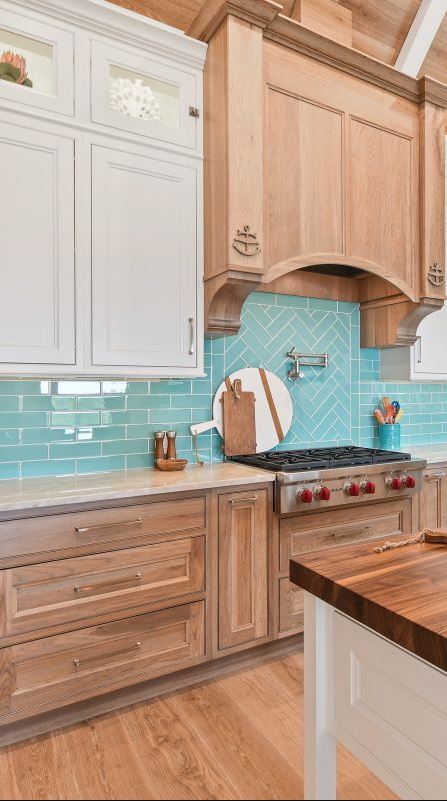
Painted vs. Stained
When selecting your cabinets, you’ll also need to decide whether you want them to be painted or stained. There’s no right or wrong answer here; it’s all about deciding which will work best with your home’s style. While each option has its own set of benefits and challenges, it’s up to you to decide which one is best for you.
Cosmetics
Visually, stained cabinets have a wood-grained texture due to the transparency of the stain. Painted cabinets are a solid color with no visual pattern or texture. One thing to consider is the color palette of your kitchen. Earth tones work very well with stained cabinets because of the natural aesthetic. On the other hand, painted cabinets tend to work well in grays and whites, but can also look great with more adventurous accent colors.
Cost
The price of the cabinet finish itself doesn’t differ much between paint and stain. However, stained cabinets may cost more depending on the species of wood you choose to use. Different wood species offer different wood grain patterns and characteristics. These don’t show when you paint a cabinet, so it only matters when you go with stained cabinets. Birch, maple, and oak tend to be lower in cost, while sapele and cherry woods are more expensive.
Durability
In terms of durability, the difference between painted or stained cabinets is somewhat counterintuitive. With painted cabinets, the paint offers a thicker layer of protection than stain, so it’s more resistant to dents and scratches. On the other hand, stained cabinets have more visual variation in their surface due to the woodgrain. This variation hides surface damage and dirt better than the solid paint color. So painted cabinets resist damage, but any damage they do sustain will show through more.
Neither paint or stain are the most durable cabinets that you could consider. If you are especially concerned about durability, consider Supermatte Foils or laminates that have a higher degree of durability. Watch this video to discover what happens when we soak all these types of cabinet doors in water overnight:
MDF vs. Plywood
The other major decision you’ll have to make regarding your cabinets is whether the boxes will be made of plywood or MDF. Plywood cabinets are made of many thin sheets of wood pressed together. MDF is also a wood-based material, but it is made of wood fiber and held together by resins.
Plywood cabinets
Known for their durability and strength, plywood cabinets are great all-around material for cabinet box construction. They are substantially more water-resistant than standard MDF, an important quality due to the amount of water in kitchens. Plywood is also a stronger material, so it takes less plywood than MDF to make a cabinet of equal strength. As a result, plywood boxes are lighter and therefore easier to install. The interior of the cabinet also tends to perform better at withstanding the residual moisture that might be in a dish coming from a dishwasher.
MDF cabinets
Although some people hear “MDF cabinets” and think low quality, there are plenty of high-end cabinet lines made with MDF (especially moisture resistant MDF). This is because MDF does offer some excellent qualities not found in plywood. One of the best things about MDF is that it has a much flatter, uniform surface than plywood. Since woodgrain has variety in texture and density, it can be difficult to achieve as smooth as a surface with plywood. This makes the MDF much easier to paint. Standard MDF also costs 10-15% less than plywood, so if you’re looking for a budget-friendly option, this might be for you.
Choosing Appliances
If new appliances are in the plan for your remodel, you’ve got a lot of options to sift through. There’s a big difference between standard and luxury-level appliances in terms of cost and quality. There are also several lifestyle factors you’ll need to consider before settling on an appliance package.
Refrigerator
Finding the best refrigerator for your home is more than just getting a box that keeps your food cold. Your refrigerator should have enough space and the right features to serve your needs.
The first thing you need to decide is how big your refrigerator needs to be? This can be affected by the size of your family and the amount of food you cook in your home. The more food your family uses, the bigger your fridge should be. A single person living alone might use 6-8 cubic feet of fridge space, while a couple might need closer to 10-12.
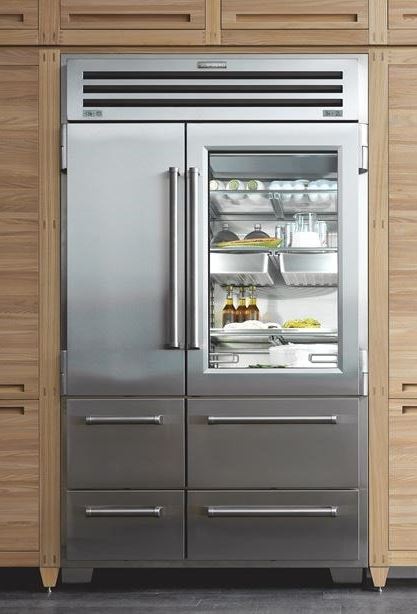
You will also want to consider what features you want your refrigerator to have. Do you want a water filter and ice maker? Movable shelving? Smartphone controlled inventory management system? How about individual temperature-controlled compartments? There are plenty of neat things a fridge can do, but that doesn’t mean you’ll use every cool feature there is. Decide on which ones matter most for you.
In terms of brand, there are standard, entry-level refrigerators manufactured by appliance companies like Samsung, General Electric, Whirlpool, and LG. These refrigerators come with all the usual bells and whistles and by almost any standard will serve you well. However, if you’re looking for more high-end appliances, Sub Zero offers some of the best-in-class refrigerators known for their design and engineering. These luxury appliances have top-of-the-line thermal seals and air filters, keeping food fresher. They also can be fully integrated into your kitchen to blend in with your cabinetry, as well.
Oven range
The oven range is another area where details matter. You’re going to do almost all of your cooking here, so it’s important to get it right.
Will your new range be electric or gas? It doesn’t have to be the same as your previous – in most places, it’s completely possible to convert from electric to gas or vice versa. It all depends on what you want. Electric ranges tend to offer better control at low temperatures, are easier to clean, and are less expensive to install if you don’t already have a gas line. Gas ranges, on the other hand, offer higher heat, a more versatile cooking experience, and are less expensive to maintain.
Another thing to consider is whether you want an oven range combo, or separate oven and cooktop units. While the combo is easier to install and costs less money, having these two units separated offers more flexibility when designing your kitchen. Plus, somebody can cook while another bakes and neither gets in the other’s way.
If you’re looking for specific brands, Whirlpool, Frigidaire, and KitchenAid are all trusted appliance brands that make good oven ranges. However, if you do a significant amount of cooking, the high-end Wolf brand, Bluestar, or Dacor ranges are among the best. These ovens and ranges offer unparalleled design and reliability. They are even renowned by professional chefs as some of the best cooking appliances available.

Sink
Choosing the right sink for your kitchen is more complex than you might think. The main factors to consider are the number of sinks you need, the size of each sink, and the number of basins per sink.
While most standard kitchens have one large sink, adding a second can often be advantageous. Auxiliary sinks (also called bar or prep sinks) offer great utility and provide additional workspace to the kitchen. The standard approach is to install an auxiliary sink for food preparation and reserve the main sink for cleaning and organizing dishes.
A more recent trend involves switching the two. One of the best ways to maximize the usability of your sink area is to install a workstation sink. More than just a washbasin for your dishes, a workstation sink is designed to function as a hub for food cleaning, preparation, and serving. They have many practical features, such as removable cutting boards, strainers, serving dishes, and drying racks. The Galley is one of the leading manufacturers of workstation sinks and offers products in several sizes ranging from 24 inches up to 7 feet.
You’ll want to make sure your sink is wide enough to clean and rinse all the dishes your family uses after a meal. Having multiple basins makes it easier to separate the dirty dishes from the ones being cleaned. A family of 6 can comfortably function with a 27-inch, 2-basin sink. Can you go larger? Absolutely. However, standard sink base cabinets are 30 inches wide, so anything larger than a 27-inch sink will require a larger sink base cabinet.
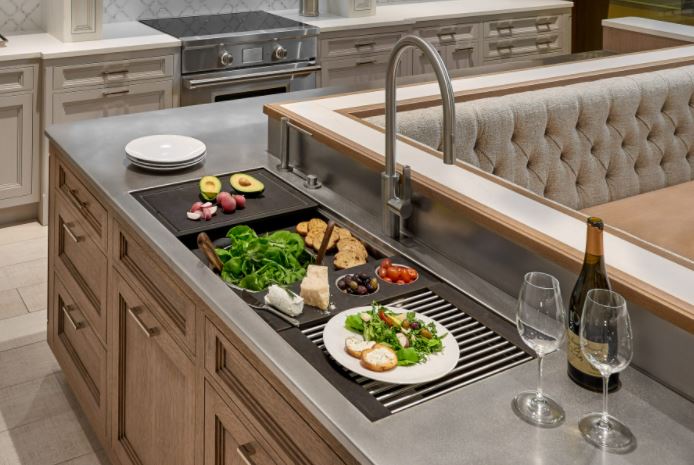
Microwave
Believe it or not, your microwave is the appliance that will likely get used the most. Though often overlooked, the microwave plays an important role in your kitchen, and you must choose the right type of microwave that meets your needs. There are 3 common types of microwaves.
The first is a countertop microwave. You can usually find these at any big box store for a low price. These microwaves sit on top of your counter and can be moved around if necessary.
Then, there’s a microwave hood (or microhood), which combines the function of a microwave and a range hood. This is a great way to save space and money, as it combines the responsibility and price tag of a microwave and the range vent into one. However, most designers consider this approach to be less aesthetically desirable.
Lastly, there is the built-in microwave. This type of microwave is built into the cabinets of your kitchen and is typically considered the most stylish option of them all. The downside is that you lose out on some cabinet storage space, and you still have to buy a range hood. They’re also the most expensive option.
Changing Utility Connections
One of the most expensive factors in a kitchen remodel is the changes to utility connections. As previously mentioned, moving or rearranging your utility lines will add significantly to your total bill. But what exactly does that mean? The main utilities you’ll need to consider are your plumbing, electrical, HVAC, and gas, which you can read more about below.
Plumbing
Running water is one of the things we tend to take for granted most of the time. That is, of course, until we have to hire a plumber. There are two main types of plumbing lines in a kitchen: water supply lines and drain lines. The supply lines carry clean water to a faucet or appliance, while the drainage lines carry used or dirty water away.
The two highest consumers of water in your kitchen are your sink and your dishwasher. Chances are, they’re located next to each other in your kitchen. Why? Because it makes sense to do it that way. From a user perspective, you can easily put your rinsed dishes directly from the sink into the dishwasher. From a construction perspective, your supply and drainage lines can tie into one another if they both go to the same general area.
With a shortage of supply piping and plumbers, plumbing work isn’t cheap. Maybe you decide to move your sink or dishwasher. Or, perhaps you want to add a second sink to make your kitchen layout more efficient. Sometimes, even your refrigerator needs to be hooked up to a supply line to dispense water. All of these will require plumbing work, which in turn will raise the total cost of your remodel.
Electrical
Electrical work is an entirely different beast on its own. A kitchen remodel is especially tricky, because so many different appliances need to be on their own circuits. Each circuit wires back to the electrical panel in the home, so depending on how far that is from the kitchen, your electrician might be very busy. And the busier he is, the more he’s going to charge you.
Your oven, microwave, refrigerator, and dishwasher all need to be on separate circuits. Then, all the outlets in your kitchen also have to be on a separate circuit with a ground fault circuit interrupter switch (GFCI). Then, there’s the challenge of lighting. While your lighting may all be on the same circuit, your kitchen will likely have several independent switches controlling overhead, zone, and task lighting.

When you move the location of an appliance, your electrician must either extend the circuit or re-wire an entirely new one. The same goes for lighting, too. And that’s if your kitchen was wired correctly in the first place. In many older homes, the electrical system has to be entirely re-installed because of outdated, dangerous wiring methods.
Natural Gas
Natural gas comes often into play when adding or changing gas appliances. Ovens and cooktops are the most common. If the previous appliance was not gas, the new appliance will at minimum require a new gas line. You may also need to upsize the gas meter from a 1 PSI to 2 PSI system. This in turn would then require every appliance to have its own pressure regulator.
Some remodel carpenters may be able to perform simple adjustments on the gas system in your home. However, the more complicated it becomes, the more likely it is to require a professional subcontractor’s attention.
HVAC
HVAC is a major factor in kitchens primarily due to the range hood. If the airflow in the hood is greater than 400 cubic feet per meter, it requires a system to regulate the air pressure in your home. This allows you to turn on your range hood without your ears popping, and is also required by code. Depending on the changes in cabinet and wall layout, you may also need to adjust the placement of vent registers and cold air returns.
Types of Countertops
As one of the focal points of a kitchen, your countertops can either make or break your kitchen – and your budget. Fortunately, there are many different types of countertops you can choose from, and each one has a unique set of strengths and weaknesses.
Laminate
Laminate countertops are the most cost-effective out of any of the countertop options. Made of vinyl-coated wood particleboard, they lack durability and tend to be visually unappealing.
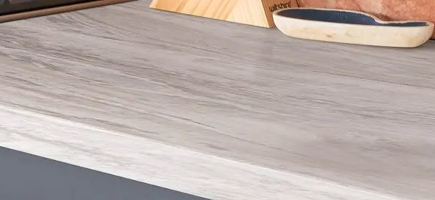
Synthetic
Generally made from acrylic, synthetic solid-surface countertops offer a strong balance between cost, strength, and aesthetics. Thinscape by Wilsonart is one of the leading synthetic countertop brands.

Quartz
Quartz is a halfway point between synthetic and natural stone countertops - it’s made from a combination of both. With about 90% ground stone and 10% polymer resins, quartz offers a durable, visually consistent slab at a lower cost than stone.

Stone/Granite
The best of the best, natural stone countertops are most popular in granite and marble. The costliest option, these types of counters are known for their natural appearance and resistance to heat and scratches. The major disadvantage of natural stone countertops is the rock is usually porous, which requires occasional sealing.

Dekton
Higher in cost than both quartz or granite, Dekton is a composite countertop manufactured using high heat and pressure. This process makes the material extremely hard and durable. Dekton is heat, scratch, and stain resistant, and is the only countertop material on which you can directly place a hot pan.
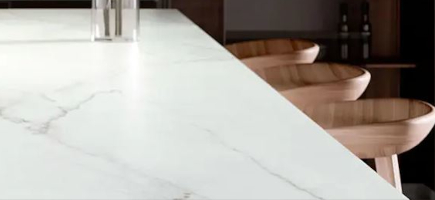
Selecting a Floor
The task of selecting flooring adds to the complexity of a kitchen remodel. You’ll want to take into account the level of foot traffic and water exposure your floor will be subjected to. It’s also good to consider how the color and style of flooring will complement the cabinets and countertops. Here are the four most popular types of flooring:
Vinyl
Sheet vinyl flooring is a low-cost, highly water-resistant option that comes in one single sheet of vinyl, cut to the dimensions of the room. Though inexpensive, it is often criticized for its poor visual appeal and short lifespan. Sheet vinyl typically costs between $1.00 - $2.50 per square foot for material only.
Laminate/LVP
Though there are some differences between the two, both laminate and luxury vinyl plank (LVP) come in click-together planks and are similar in terms of durability and water resistance. In most categories, laminate outperforms LVP.
Both come in water-resistant options, but laminate tends to be more prone to water damage in general. However, LVP costs more and is known to buckle with large temperature swings, making it difficult to work with in the Pacific Northwest. For material alone, laminate flooring costs between $2.50 - $4.00 per square foot, while LVP can cost up to $5.00.
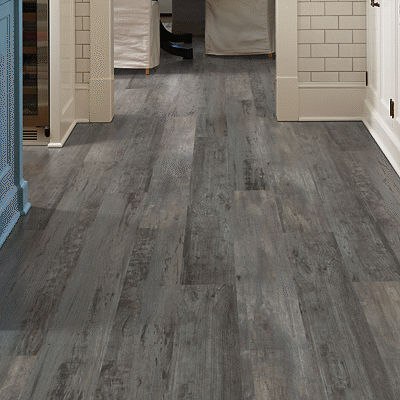
Hardwood
Real wood has been the gold standard of flooring for centuries. Visually, it’s unparalleled. The number of wood species and stains available makes its customizability is nearly endless. Hardwood lasts a long time, too.
Though the finish may wear off after a few years, hardwood can be sanded down and re-finished to look brand new again. The downside is that it requires a lot of maintenance, is prone to water damage, and costs substantially more. The material alone can cost anywhere from $6.00-$21.00 per square foot, plus the cost of installation.
Tile
Waterproof, timeless, and low-maintenance, tile is often one of the top choices for kitchen flooring. There are plenty of design options, with different tile colors, sizes, and laying patterns to choose from. Tile works especially well in a space with stained cabinets, as it offers some contrast to the woodgrain while complementing the brown wood tones.
Although the material isn’t especially expensive at $2.00-12.00 per square foot, tile setting has higher labor costs than any other flooring type. A tile floor is a sizable investment, but one that pays off the longer you have it. A good tile floor will outlast any other flooring by several decades.
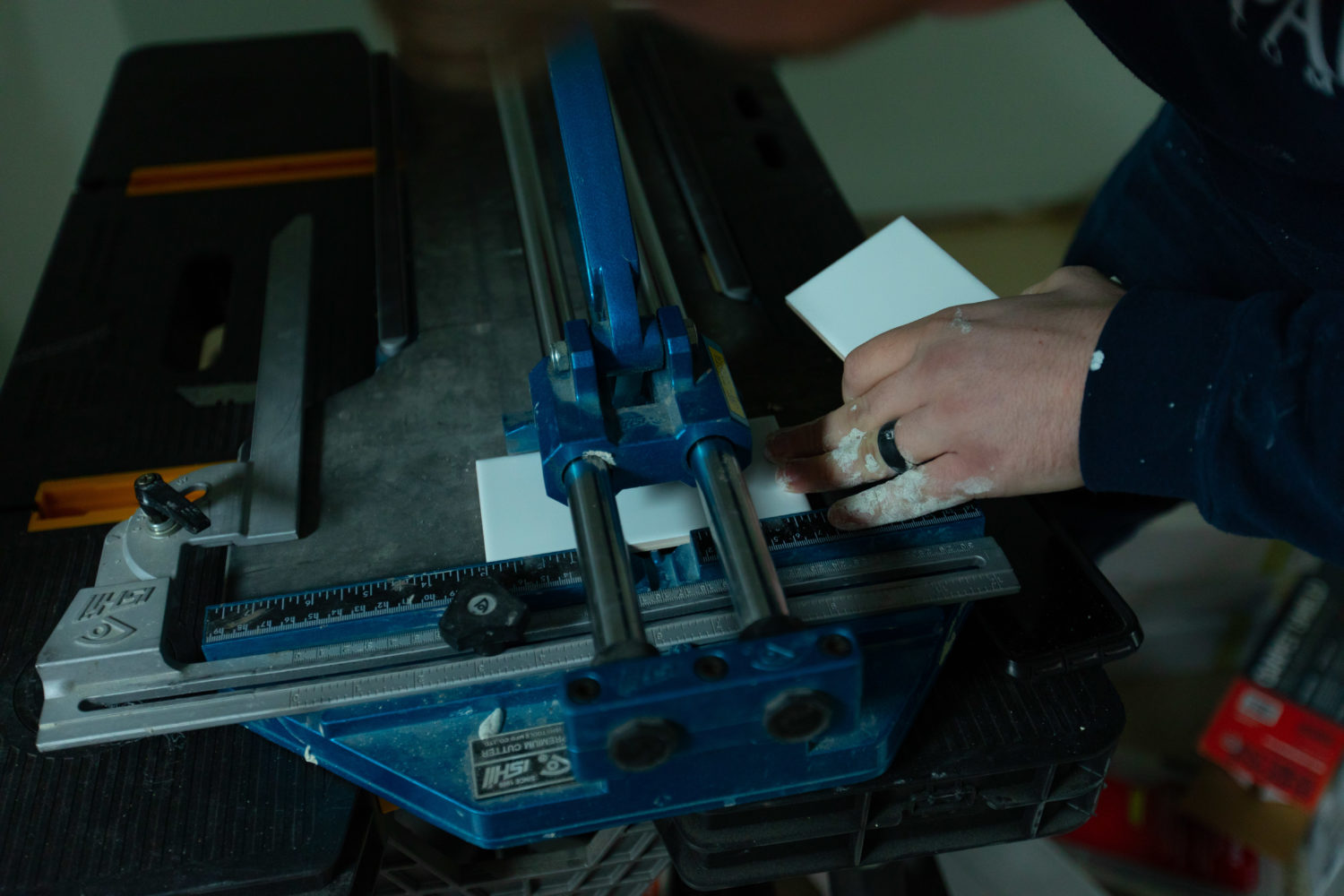
Current Kitchen Design Trends
Every good kitchen remodel should be unique in the way it meets the needs of the homeowner. However, that doesn’t mean there aren’t a few common threads in most kitchen remodels. In the remodeling industry, there are several kitchen design trends that are becoming more and more popular.
Two-tone cabinets
To help their cabinetry stand out while also adding visual variation to the kitchen, many homeowners are choosing a two-color cabinet design. In this approach, some cabinets are a neutral or base color, while others come in an accent color. Often, it’s the island cabinets that get the “pop,” while the wall cabinets remain more muted. Other times, this method is used to draw attention to the base cabinets.

Large Islands
A kitchen island is a great option for homeowners who love to entertain guests. It’s a place where people can gather in the kitchen and converse while you prepare food, and doubles as a serving area when the food is ready to eat. A workstation or auxiliary sink at the island can increase the functionality and efficiency of the kitchen, too.

A kitchen island is a great option for homeowners who love to entertain guests. It’s a place where people can gather in the kitchen and converse while you prepare food, and doubles as a serving area when the food is ready to eat. A workstation or auxiliary sink at the island can increase the functionality and efficiency of the kitchen, too.
Task lighting
To make sure you have the right lighting for different kitchen tasks, layered lighting is a great feature. Under-cabinet lighting helps illuminate your countertops for prep and cleaning work. Storing and retrieving dishes is easier with inner-cabinet lighting. Task lighting can also be used to illuminate different kitchen zones, so you don’t have to light up your entire kitchen if you’re just using one area.
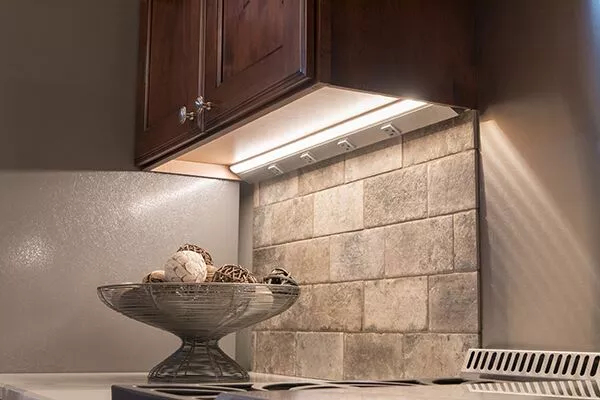
Kitchen Remodel Process
Homeowners headed into the kitchen remodel process usually have a lot of questions. The thought of tearing your kitchen apart can be nerve-wracking, even when you know you’re getting a brand new kitchen afterward. A kitchen remodel goes through several stages and can take many months from start to finish. During this time, you can expect a few changes and interruptions to your usual routine.
Timeline & Phases
From the moment you begin the process by contacting a designer, the typical kitchen remodel takes between 25-30 weeks to complete. When working with a design-build firm like Lamont Bros., the kitchen remodel process is broken into Six steps.
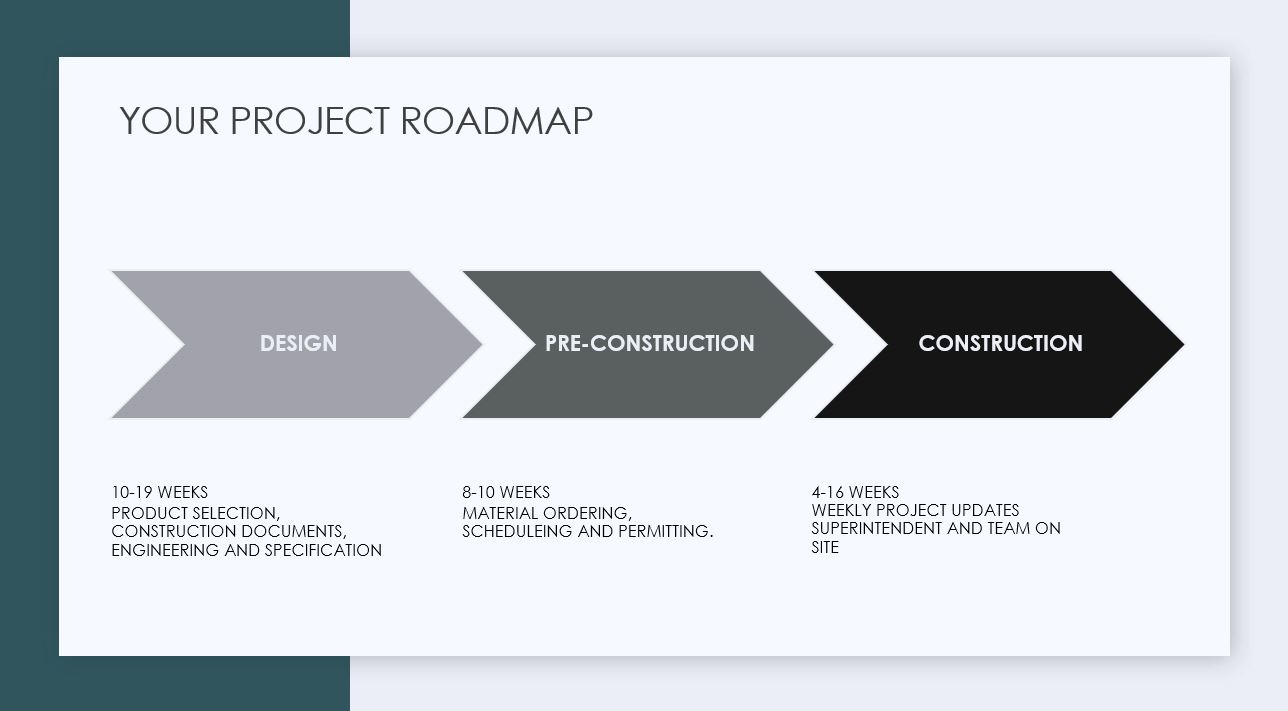
Step 1: Dream (1-2 Weeks)
The first phase of your remodel is all about considering the possibilities. With the help of a professional design consultant, you’ll use this time to brainstorm the different ways your kitchen remodel might look and function.
Initial Call — You and your design consultant meet via phone or video call to discuss your vision for your kitchen remodel.
On-Site Consultation — Your design consultant meets you in your home to survey the space, take measurements, and further explore the possibilities of your remodel.
Project Proposal Meeting — You meet with your design consultant to talk about your budget goals and sign a proposal to officially start the design process.
Step 2: Definition (1-3 Weeks)
You spent the first phase dreaming of how your kitchen remodel might look. In the definition phase, you’ll work with your design team to narrow those possibilities down to a clear and concise vision.
Concept Planning — Your design team will develop several concept designs that showcase different layout and aesthetic options for your kitchen remodel.
Concept Review — Once the concepts are completed, you’ll review the different options to identify which design elements you prefer and ultimately select one of the concepts to move forward with.
Concept Refinement — The design concept you choose does not have to perfectly match your remodel vision right away. You and your design team will work together to refine the concept until you are satisfied with it.
Step 3: Design (2-4 Weeks)
Now that you have a concept dialed in for your kitchen remodel, your design team will begin drafting design plans for the project. Throughout this phase, you’ll be making decisions regarding the specific design features of the remodel, including cabinets, appliances, and fixtures. Think of your concept as the outline. Now, you get to color it in.
Design Framework — Your design team will create technical drawings based on the previously agreed-upon concept, to be used by the build team during construction.
**Selections —** As your design team develops the plans for your kitchen remodel, you’ll work with your designers to select specific products and design features.
Construction Contract — Once the selections are made and your design plans are finalized, you’ll sign a fixed-price contract to lock in the cost of your remodel before construction begins.
Step 4: Preparation (4-12 Weeks)
Between signing your contract and the start of construction, you’ll have a little bit of waiting to do. While your build team gets all the necessary things in order to officially begin the project, you can do your part by preparing your space.
**********************Permits & Material Orders — As you prepare yourself and your home for the coming remodel, your team will handle the necessary permitting and order any materials required for the project.
Home Prep — You’ll need to take some time to consider how you plan to live while your kitchen is under construction. If you plan on setting up a temporary kitchen, this is the time to do it.
Pre-Construction Meeting — You and your build team will meet together to discuss how your specific kitchen remodel process will look.
Phase 5: Construction (4-12 Weeks)
Demolition — During demolition, you’ll probably experience a lot of noise and dust. While your build team will do their best to keep things contained, you should expect a few interruptions to your daily life during this time.
Rough-In Walkthrough — After demolition, your team will get to work constructing the general framework of your new kitchen. At your rough-in walkthrough, you’ll get to see the general layout of your kitchen taking form, with structural, electrical, and plumbing elements in place.
95% Walkthrough — During this meeting, you’ll get to see the kitchen in a near-complete state with cabinets, appliances, and finishes in place. You’ll also give your team a punch-list of things to do before closing out the job.
Final Walkthrough — Congratulations! Your new kitchen is complete and ready for you to start cooking in!
What are Your Responsibilities?
As the homeowner, you play a big job in the kitchen remodeling process. You’ll be the one directing the project, making design decisions, and living through several weeks of construction. Here are a few things you can do to be proactive about having a successful kitchen remodel.
1. Do Your Research
Before you even begin designing your remodel, you’ll want to research as much as you can about kitchen remodeling. This is a big decision and it’s extremely costly to make the wrong choices. A few topics you should consider researching include:
Remodeling in your area — Every geographic area has unique challenges and processes for remodeling. Oftentimes, many of the homes in a community were built around the same time, so many of them have similar design flaws and things to look out for. Climate and local construction codes also vary by region and can directly impact the remodeling process. // link to your geographic articles.
Contractors — It’s also important to find the right contractor for your kitchen remodel. Use the guide from the previous section to identify the best fit for your project.
Products — As you draw close to deciding whether or not you want to remodel your kitchen, it can be helpful to look at different products you might want as part of the design. Cabinets, appliances, countertops, tile, flooring, and plumbing fixtures all go into a kitchen remodel. Start looking now.
Your Aesthetic — If you don’t yet know much about your personal design style, now is the time to start exploring it. A good way to begin is to create a Pinterest board where you can save images of design features and styles that speak to you. The better you understand your style at the start of the design process, the more successful your design will be.
2. Commit to the Process
Remodeling requires trust. Regardless of who you hire to remodel your kitchen, it is important that you be able to commit completely to the process. In order to have a successful remodel, you and your contractor must be able to work together under a predetermined set of guidelines.
Communicate with your Team — The most important part of your relationship with your contractor is communication. Make sure you can clearly articulate your vision and needs for the remodel. Additionally, make sure you understand what your contractor needs from you in order to do their job well.
Make Decisions — When it comes to remodeling a kitchen, you’re going to have a lot of choices to make. To ensure that your project remains on schedule and within its budget, you’ll need to commit to making decisions quickly and with confidence.
Offer Feedback — Your team’s top priority should be a successful kitchen remodel. If you feel that something stands in the way of that, it’s your responsibility to offer feedback to your team so they can make corrections. It’s best to offer feedback as soon as possible, as this increases the chance of actually solving the issues.
A kitchen island is a great option for homeowners who love to entertain guests. It’s a place where people can gather in the kitchen and converse while you prepare food, and doubles as a serving area when the food is ready to eat. A workstation or auxiliary sink at the island can increase the functionality and efficiency of the kitchen, too.
3. Plan & Prepare Your Space
Once you remodel moves into construction, you’ll be out a kitchen for several weeks. Here are a few things you can do to make sure construction goes as smoothly and painlessly as possible.
Set up a temporary kitchen: Setting up a temporary kitchen during a remodel allows you to continue preparing meals and helps avoid the inconvenience and expense of eating out. A temporary kitchen can be set up in a garage, utility room, or other room with access to water and electricity. Though not a full kitchen, it may include a microwave, toaster oven, hot plate, and other small appliances to meet your cooking needs.
Move your stuff out of the kitchen: You want to protect your belongings just as much as your build team doesn’t want to accidentally damage something of yours. Moving your belongings out of the kitchen protects them from potential damage or loss during the renovation process. It also provides more space and easier access for contractors to work in the kitchen, allowing for a safer, more efficient renovation.
Take a vacation: You may not have the luxury of living in another house until construction is complete, but you might be able to get away for a few days during your kitchen remodel. Remodeling can be noisy, dusty, and stressful. Taking a break from it all can give you the opportunity to relax and recharge. It also allows you to avoid the inconvenience and disruption of living in a construction zone.
Ready to Start Designing?
Now that you’re a full-fledged expert on kitchen remodeling, are you ready to take the next step? If so, keep up on your research! We have plenty of useful material on our blog to answer any questions you might have about remodeling your kitchen. There, you’ll find extensive information on everything from cabinetry selections to the kitchen remodeling process.
If you’re ready to make big decisions about how your kitchen can better fit your needs, we’d love to talk with you! Click the button below to schedule a free consultation with one of our kitchen design experts. We’ll guide you through the entire process of remodeling your kitchen and answer any questions you still have.

